50 Unique Places to Visit in Georgia: The Ultimate List (Updated for 2025)
59 min readThe ultimate list of unique places to visit in Georgia (the country) – from cities and essential places of interest to alternative and obscure destinations, as recommended by an expat. Includes the best things to do in Georgia, transport instructions, and insider tips.
She may be small in size and still relatively obscure on the world tourism stage, but let me tell you: There is a heck of a lot to see and do in Georgia.
John Steinbeck’s “kind of second heaven” – the sliver of planet earth that God supposedly decided to set aside for himself – Georgia really is as beautiful and diverse as people make it out to be.
In the north, the dramatic peaks of the Greater Caucasus form a natural land border with Russia, giving way to the fertile Alazani Valley and a semi-desert moonscape of rainbow hills, hoodoos and mud volcanoes in the south. And that’s just the east. On the western side, clutches of tea bushels and swathes of ancient Colchic forest thrive on mineral-rich soils and humid air, cascading down to the volcanic landscapes in the foothills of the Lesser Caucasus and culminating with the magnetic-sand beaches on the Black Sea Coast.
From the ‘Georgian Arctic’ to the ‘Georgian Dolomites’ and the ‘Riviera of the Caucasus’, there’s a little bit of everything in Georgia!
Having lived in the country for over five years and travelled from top to bottom several times over, I have been lucky enough to visit all 69 municipalities. I have seen and experienced almost everything Georgia has to offer – well, almost!
This mega list brings together my favourite Georgia destinations, including must-sees and alternatives for every season and every interest. These are all places that I have personally visited, researched extensively and written about. Links to my in-depth destination guides are included below for most of the locations mentioned.
Put it all together: See my Georgia Itinerary for recommended transport routes, my Georgia Road Trip Itinerary for a flexible self-drive option, and my Georgia Travel Guide for more essential trip planning tips.
Looking for even more Georgia inspiration? Sign up here to get a free copy of my 25-page ebook, 365 Things to Do in Georgia:
Please note: This post contains affiliate links, meaning I may earn a commission if you make a purchase by clicking a link (at no extra cost to you). Learn more.
Many of the places on this list are featured in my video, ‘Two Years in Georgia’. I made this compilation back in February 2022 to celebrate my two-year Georgia anniversary.
Map of places to visit in Georgia
Click the map of Georgia below to open an interactive version in Google Maps. You can then click on any city or place and find the link to my corresponding blog post.
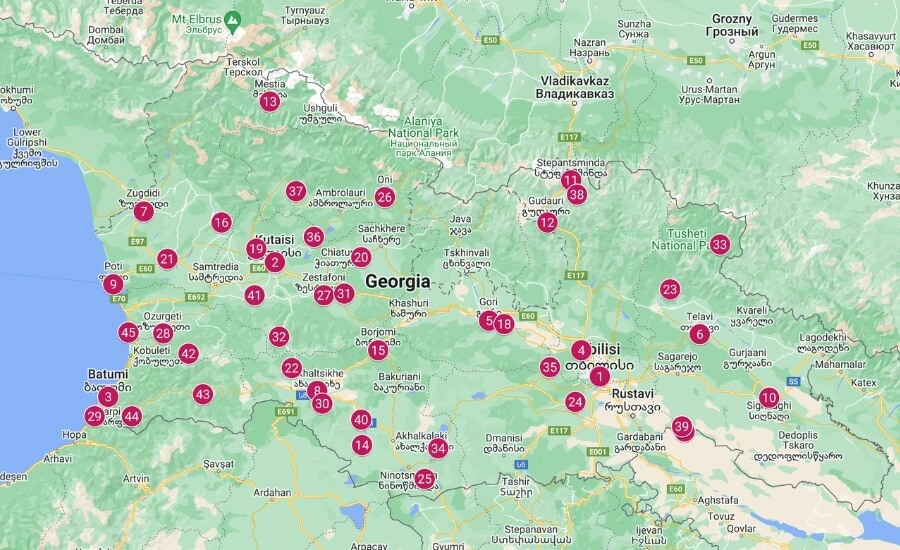
Top 10 places to visit in Georgia right now
Some of these destinations are perennial favourites, while for others there is a special reason to visit in 2025.
1. Tbilisi: Georgia’s captivating capital city
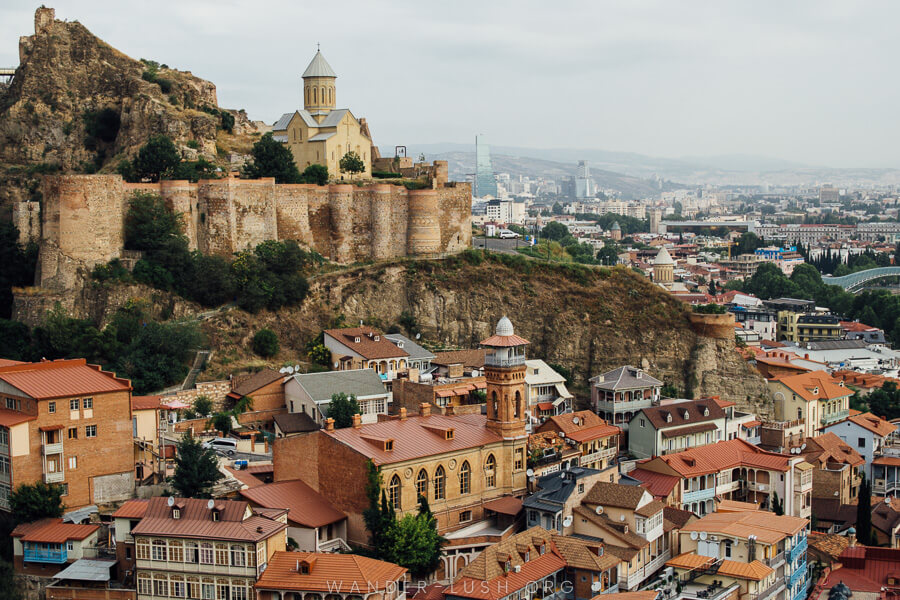
No visit to Georgia is complete without spending a least a couple of days in Tbilisi. The city’s history dates back to at least the 6th century and its position at the geographical and figurative crossroads of East and West has meant it has always found a way to incorporate the best of both worlds.
Tbilisi lies in a valley ringed by mountains, each with a soaring cable car or funicular at the ready to whisk you away towards magnificent views. This is a city of details, so after a broad overview from afar, it’s time to take the streets with a magnifying glass. Hours can be spent examining the heritage buildings on the Left Bank and in Sololaki, Tbilisi’s oldest neighbourhood.
Tbilisi is a symphony of different religions, cultures and traditions. Synagogues, Orthodox cathedrals, Armenian churches and a mosque are all within shouting distance of each other. Old bazaars and merchant’s mansions allude to the city’s history as a trading hub, while renovated houses and retrofitted factories house art galleries, cultural spaces and music venues.
Why visit Tbilisi in 2025?
In addition to the usual slew of new restaurants, cafes and bars, several key museums and galleries have recently reopened after long closures, including the State Silk Museum and the Art Museum of Georgia. Narikala Fortress is scheduled to reopen after undergoing repairs, and the Mtatsminda Cable Car has just relaunched.
Things to do in Tbilisi:
When you’ve had your fill of city life, there are dozens of worthwhile day trips you can take from Tbilisi, plus hikes in and around the city centre.
2. Kutaisi: The cultural heart of Georgia
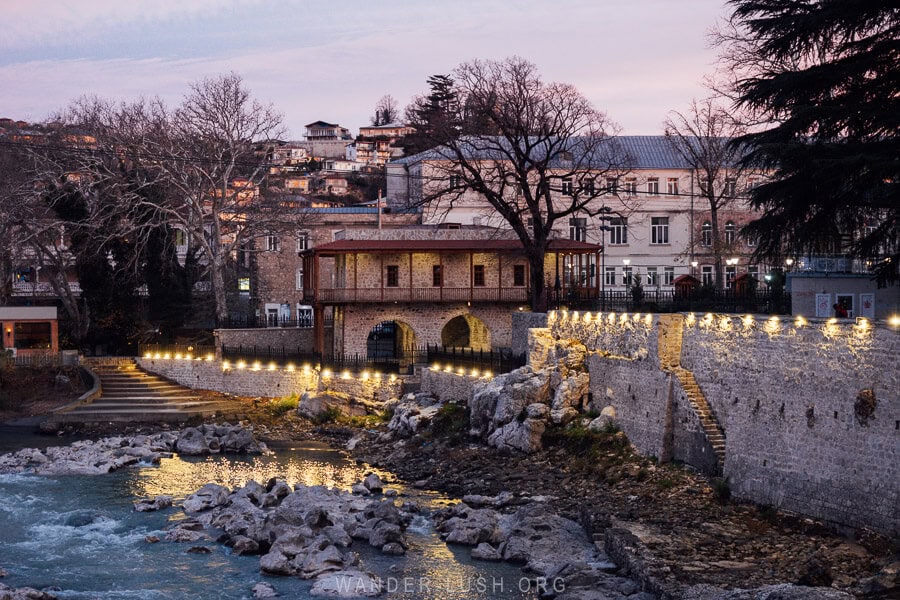
More compact than Tbilisi and with a completely different vibe, Georgia’s fourth-largest city tends to get overlooked by travellers. Those who only visit Kutaisi airport are making a terrible mistake: this is Georgia’s most charming city (in my eyes, anyway!).
It is also one of Europe’s oldest. Continuously inhabited since the 6th century BC, Kutaisi served as the political centre of the Kingdom of Colchis. Later it became Georgia’s cultural capital – the stomping ground of countless poets, musicians and playwrights. In the Soviet period, Kutaisi was retrofitted for industry and her skyline remoulded.
Nowadays Kutaisi is known for its laidback atmosphere, sidewalk cafes and charming wine bars, and the many churches and monasteries on its doorstep. Its strategic location makes it the perfect base for exploring Western Georgia, as it is a gateway to the northern part of the Black Sea Coast, Svaneti, and underrated regions such as Guria and Samegrelo. Here is a list of my favourite Kutaisi side trips.
Why visit Kutaisi in 2025?
Following its designation as a UNESCO City of Literature in 2023, this year Kutaisi will add a new cultural centre and a digital exhibition space inside the refurbished Golden Marquee to its legion of museums. Work to transform the surreal Parliament Building, empty since 2012, will finally begin. It will eventually relaunch as a TUMO innovation and technology hub.
Things to do in Kutaisi:
- Walk through Central Park, browse the fragrant Green Bazaar, and ride the old cable car
- Explore the historic Catholic Quarter and the Jewish Quarter, stepping inside the gorgeous Kutaisi Synagogue and the Annunciation Temple
- Visit some of Kutaisi’s small and quirky museums (the Museum of Sports is a favourite)
- Watch the sunset from Bagrati Cathedral
- Cross the roaring Rioni River to find mosaics, local markets and more of Kutaisi’s hidden gems
- Visit the UNESCO-listed Gelati Monastery then follow the forested hiking trail to nearby Motsameta
- Sample vegetable and herb-heavy Imeretian fare at one of Kutaisi’s many stellar restaurants
- Hop between Kutaisi’s cute wine bars to try vino from Georgia’s second-largest wine region
- Take a side trip to Tskaltubo to explore the old sanatoria or to Chiatura to ride the cable cars
- Swim in open-air hot springs near Kutaisi in Vani, Sairme and Nokalakevi
3. Upper Svaneti: Mestia, Ushguli & everything in between
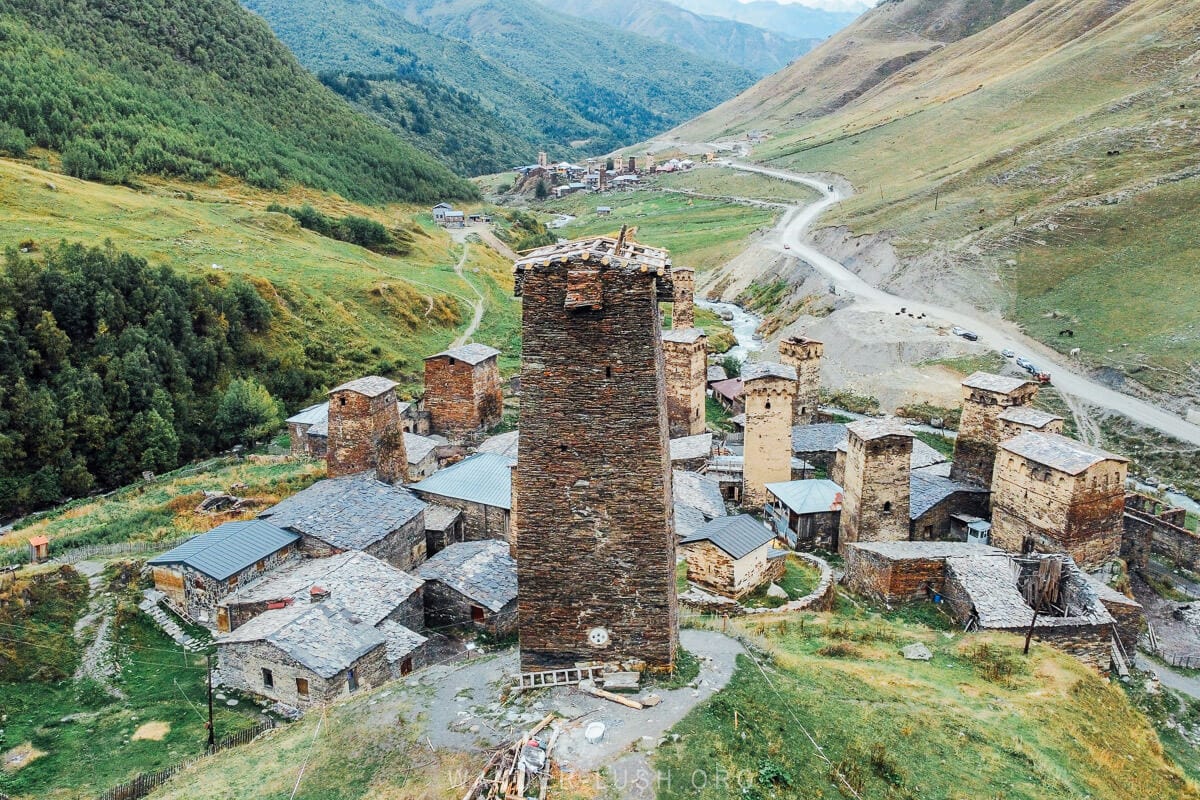
The jewel in Georgia’s crown, Upper Svaneti needs no introduction. This iconic mountain region in the Northwest highlands features on most travellers’ bucket lists and is as much of a cultural destination as it is a hiking mecca. Barriers to entry (namely the harrowing roads and long travel times) are slowly being addressed to make it easier to visit Svaneti throughout the seasons.
Svaneti is the ancestral home of the Svans, an ethnic group known for their fortified tower houses. Stone towers known as Koshki can be seen all across Georgia’s northern regions and over the border in Chechnya, but the Svan towers are special because of their sheer abundance – there are more than 200 defensive towers in Chazhashi village alone.
The region’s biggest town, Mestia is a natural base for a stay in Svaneti. Be sure to tour the Svaneti Museum of History and Ethnography, a world-class museum that catalogues highland traditions and exhibits exquisite icons collected from Svaneti’s many churches. Two hours by road, Ushguli is considered to be one of the highest inhabited villages in Europe was named a UNESCO World Heritage Site in 1996. Stay the night to wake up to see the sunrise over Georgia’s highest peak, Shkhara.
Why visit Svaneti in 2025?
Svaneti is now more open than ever thanks to a slate of infrastructure projects that were completed in late 2024. This is great news for accessibility, but it also means the region will likely develop (and change) at a more rapid pace from hereon in. A new sealed road between Mestia and Ushguli makes the journey fast and safe, while concrete roads into many of the smaller valleys means the villages in between are now accessible to non-hikers. The final piece of the puzzle, a new road from Lentekhi to Ushguli, means travellers can now drive a loop through Svaneti – no 4WD required.
Get there: Zugdidi remains the chief departure point for Svaneti (3-4 hours by road). Take a marshrutka to Mestia from anywhere in Georgia via Zugdidi, or book a private transfer with GoTrip. See my Mestia Transport Guide for details.
Where to stay: Mestia is the most convenient base, with ample accommodation and food options and good transport connections. Hotel Lahili has modern rooms, a terrace and an excellent breakfast, with a good location walking distance from both the centre of town and the ski lifts.
Further reading: My complete itinerary for visiting Svaneti.
4. Shatili & Mutso: Khevsureti’s spectacular fortified villages
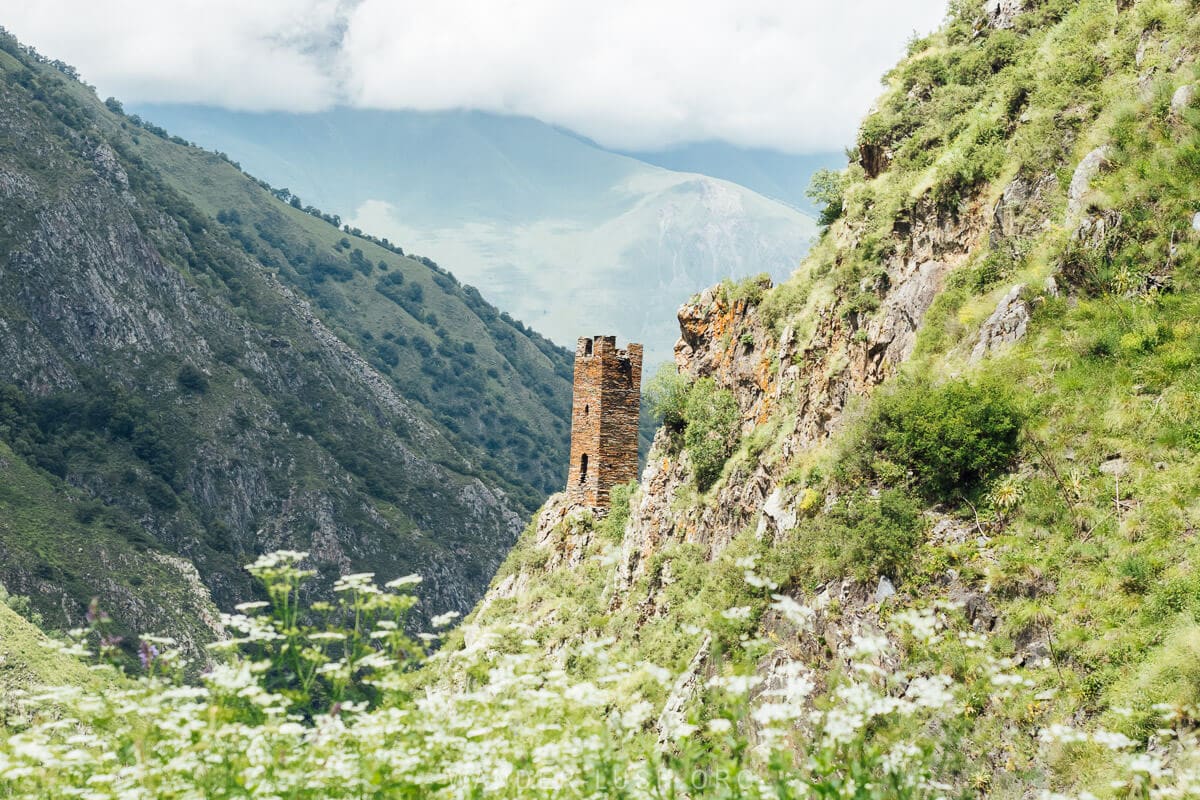
Combining the dramatic scenery of Tusheti and the cultural appeal of Svaneti (but free from the development and crowds of Kazbegi), Khevsureti is in many ways the perfect mountain destination in Georgia. The area can be reached in under 5 hours from Tbilisi and toured quite comprehensively in as little as 3 days, making it a viable option for travellers who want to experience the wild beauty of the Greater Caucasus on a shorter timeline. Like Tusheti, this is a seasonal destination that can only be reached in summer. But the roads in and around Khevsureti are markedly better.
Known as the ‘Land of Valleys’, Khevsureti’s fairytale-like landscape is dotted with medieval towers and abandoned stone villages. Unlike in Svaneti, these solitary towers often stand proud as lone sentinels. This echoes the mythology of the Khevsurs, a self-sacrificing people who are traditionally considered Georgia’s first line of defence on the northern border.
The region is divided into two parts. Upper Khevsureti is known for the fortified villages of Shatili, a tentative UNESCO World Heritage Site, and Mutso, a restored hilltop castle-settlement. The more remote villages of Ardoti and Khonischala are typically only encountered on multi-day hikes. Korsha and Roshka in Lower Khevsureti lie before the Datvisjvari (‘Bear’s Cross’) Pass, even closer to Tbilisi.
Why visit Khevsureti in 2025?
As Svaneti’s popularity builds, Khevsureti has an opportunity to position itself as an alternative to Mestia. New guesthouses continue to open, and hiking infrastructure is improving.
5. Kazbegi: Georgia’s most accessible mountain region
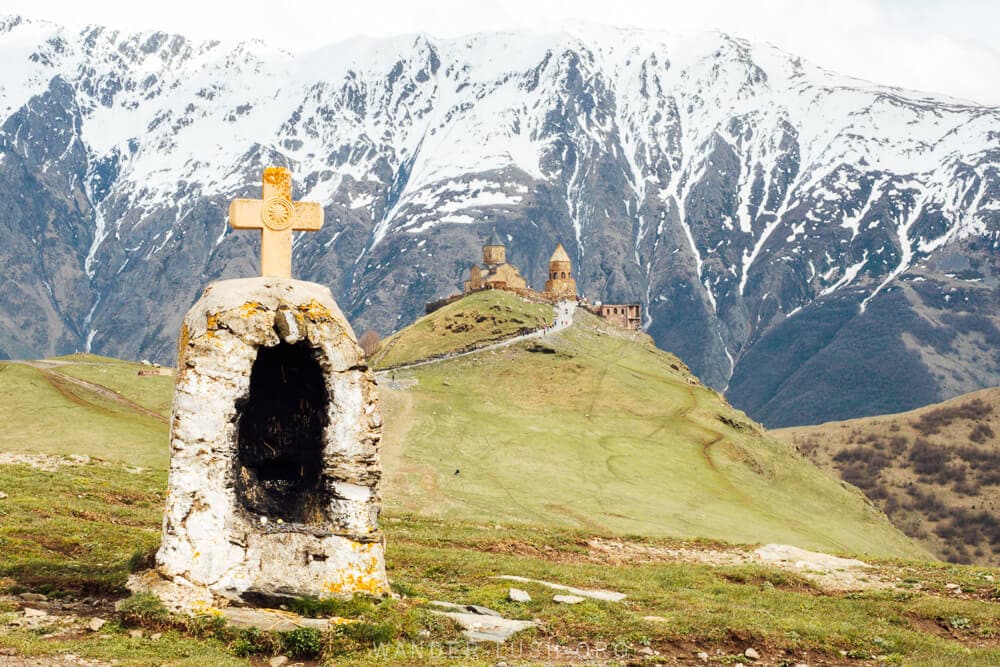
Perched on a hill in the shadow of mighty Mount Kazbek, Gergeti Trinity Church is the country’s most iconic cathedral and the poster child for Georgia tourism. It has undoubtedly helped put the little alpine hamlet of Kazbegi (AKA Stepantsminda) on the map. Despite the constant roadworks in town, the traffic from the trucks and the thronging crowds in summer, I still think Kazbegi’s reputation as a must-visit in Georgia is well deserved.
For whatever reason, the mountains in Kazbegi feel grander and more ominous than anywhere else in Georgia. The easy hike along an ambling stream up to Gergeti is a must-do, while longer hikes in the nearby Juta, Truso and Sioni Valleys are also available (see this list of day trip ideas). Almost as iconic as Kazbek and Gergeti Trinity, Rooms Kazbegi is design hotel set inside a renovated sanatorium overlooking the range. Even if you don’t stay the night, you can drop in for lunch or dinner on the terrace.
As the closest mountain region to Tbilisi (under 3 hours via the Georgian Military Highway, see below), Kazbegi can be done as a day trip. However I strongly recommend spending at least one night in the area – twilight strolls around town after the tourist buses have left are a must, and you will have an excuse to sample more of the terrific restaurants that have opened in the past 24 months.
Why visit Kazbegi in 2025?
While hiking and mountain vistas have always been the draw, Kazbegi is building itself up as a more multifaceted destination, with several outstanding restaurant openings and several special new hotels. The longest tunnel in Georgia between Kvesheti and Kobi is set to come online this year, which will hopefully free up the Military Highway from trucks and make the roads more reliable in winter.
6. The Alazani River Valley: Georgian wine country
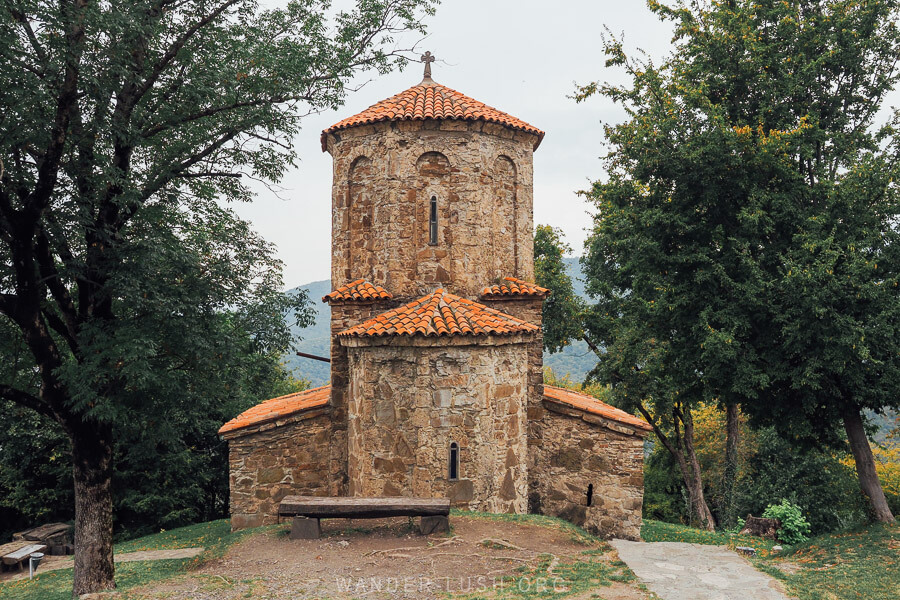
Along with mountains, wine is another essential component of any Georgia itinerary. The Alazani River Valley – i.e. the winegrowing part of eastern Kakheti Region – is home to the Wine Route and the bulk of Georgia’s viticulture activities.
Dozens of traditional cellars and commercial wineries in microzones along both sides of the valley beckon visitors for guided tours and degustations. (If you’re unsure where to start, see this shortlist of Kakheti wineries.) Qvevri wines made with according to an 8000-year-old technique where grapes are fermented in clay vessels buried underground should be prioritised. For comparison, I also recommend checking out a few wineries where contemporary European-style methods are used.
If you don’t drink or you have no interest in wine culture, Alazani is still worth a trip as one of the best places in Georgia to immerse yourself in history and religion. For every winery, there is also a monastery, some with spectacular hilltop locations, others sunken into the darkest depths of caves. As Georgia’s biggest region, Kakheti is incredibly diverse – find plenty more listings for the region later in this list.
There are countless ways to experience the wine region. For many travellers, a comprehensive wine tour from Tbilisi will be more than enough to scratch the itch. There is nothing quite like waking up on the vineyard, so if time permits, a night at a chateau or family winery is a good idea. For an extended trip, Telavi is an interesting city and an excellent base for visiting vineyards and churches, or for something different, Gurjaani has Soviet-period architecture, interesting museums and mud baths.
Why visit the Wine Region in 2025?
A slew of exciting new hotel openings – including Bodbe Hotel, HORIZONS Bakurtsikhe, Samzeo Kvareli, Ambassadori Academy and Qvevrebi – are helping to open up previously neglected corners of the Wine Region.
Get there: Take a shared taxi from Isani Metro Station to reach Telavi or Sighnaghi in under 2 hours from Tbilisi, or use one of the marshrutka van services from Ortachala Station. See my Kakheti Transport Guide for more options.
Where to stay: Choose from any of the new accommodations mentioned above, or splurge on a night at the one and only Radisson Tsinandali Estate.
Further reading: 72 hours in Kakheti wine region.
7. The Javakheti Plateau: Georgia’s Lake District
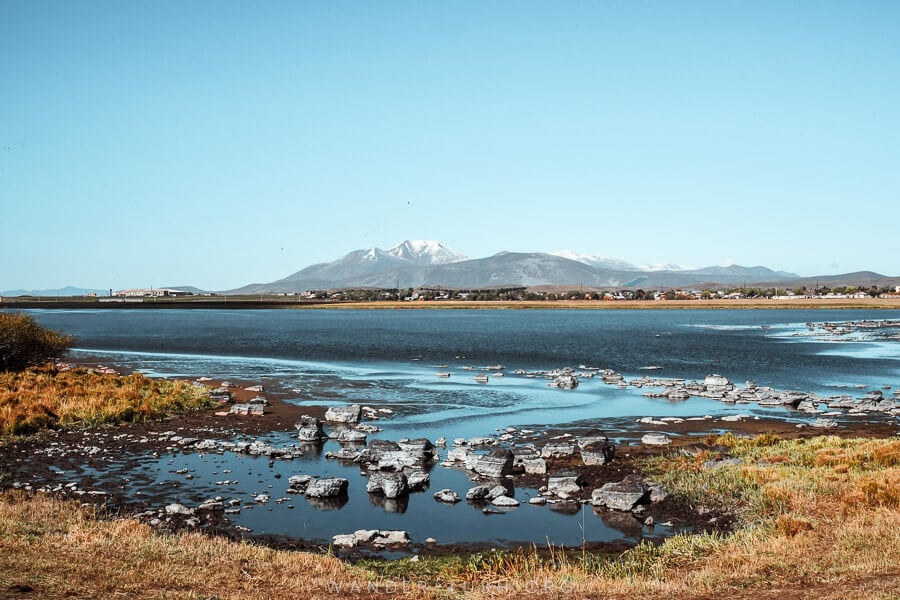
The Javakheti Protected Areas is a network of 70 lakes and their associated protected habitats in Southern Georgia’s Samtskhe-Javakheti Region. This is the country’s premier birdwatching destination – but even if you have no interest in wildlife, you will still find it intriguing and ruggedly beautiful. This area is as culturally vibrant as it is visually striking. Pontic Greek, Adjarian Muslim, Armenian and Azerbaijani families have all lived here for generations, each adding their own traditions to the mix.
Javakheti is often referred to as the ‘Georgian Arctic’ because of the harsh climate (the whole area is at a high elevation). When it’s not under thick snow, the landscape is an awe-inspiring panorama of extinct volcanoes, volcanic lakes and never-ending plains. Tourism infrastructure is quite basic and everything is spread out, so it’s best to visit with your own vehicle.
Hop between the different lakes along the Armenian and Turkish borders, each with its own character and resident bird species. Paravani Lake, one of the first lakes you reach after leaving Tbilisi, and the delightful Poka St. Nino Monastery and convent shop are a highlight. Short hiking and mountain-biking routes are available around some of the lakes, and wild camping is permitted in most areas. Standing tall over Paravani at 2,735 metres above sea level, Shaori Mountain is topped with a megalithic cyclopean fortress and commands incredible views.
Why visit Javakheti in 2025?
The BTAK passenger railway connecting Baku and Kars runs right through Javakheti and is set to launch any day now. The trains will surely bring more foot traffic and increased attention to this little-known corner of Georgia. A new railway station in Akhalkalaki is the first of many infrastructure developments.
8. Vardzia & Meskheti: The mystic south
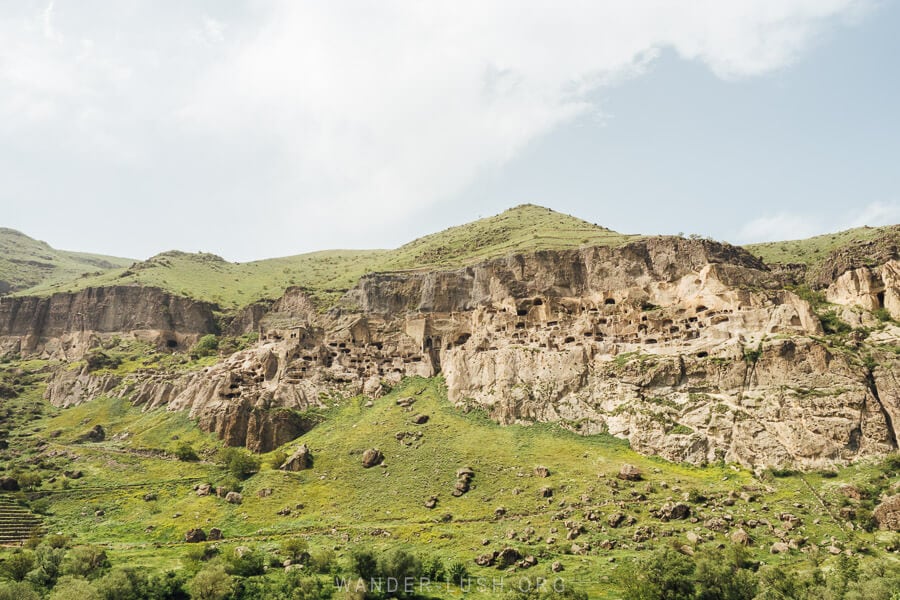
The other half of Samtskhe-Javakheti, Meskheti is a historic region best known for Vardzia, the country’s biggest and most visually impressive cave city. Vardzia’s out-of-the-way location means you’re in for a long drive, so it’s very much worth spending a couple of days in Meskheti. Outside of the well-known city of Akhaltsikhe, Borjomi Resort and the observatory in Abastumani (all detailed below), rural Meskheti is a gateway to unique gastronomic experiences and cultural encounters. This makes it my top destination in Georgia for foodies.
Traditional dishes from Meskheti include lokokina or Georgian escargot, thought to have been introduced by Capuchin missionaries, apokhti, a jerky-style dried meat, and arishta, dehydrated noodles. Try it all at Ude Monastery, where the Sisters stage supras featuring their own convent-grown produce. Meskhetian House in Chobareti offers masterclasses in tenili, a rope-like cheese made by heating and pulling curds over a flame. Visit ancient vine terraces carved from the banks of the Mtkvari River and taste wines made from endemic grapes, and sip Amphora Beer aged in clay qvevri.
Meskheti has a mystical beauty, with thousands of castles, caves and cyclopean fortresses dotted around the hills. A special vernacular architecture called Darbazuli Sakhi or ‘hall houses’ can be observed in locations such as Saro (featured later on this list). Khertvisi Fortress cuts an impressive figure on the roadside, while the medieval Tmogvi Fortress is linked to Shota Rustaveli and his epic The Knight in the Panther’s Skin.
The star of the show is of course Vardzia, a 500-metre-long sheer rock wall puckered with more than 640 chambers spread over 13 levels. Built to house a community of monks and shelter townsfolk from invading forces, the complex was a self-contained ‘city’ with its own kitchens, gardens, vineyards, an apothecary, and an elaborate irrigation system. A walking tour of Vardiza’s stone corridors reveals evidence of copper pipes, clay qvevri and ovens. Inside the grotto chapel, there is a rare fresco of Tamar Mepe, who ruled over Georgia at the time of Vardzia’s construction.
Why visit Meskheti in 2025?
Meskheti is an emerging destination for food and wine tourism. Watch this space!
Get there: Self-drive, or find your way to the city of Akhaltsikhe (details below) before using local taxis to get around.
Where to stay: Vardzia Resort is walking distance from the caves and a fine place to base your stay in the region.
Further reading: 10 things to do in Samtskhe-Javakheti Region.
9. Bakhmaro: The kingdom of clouds
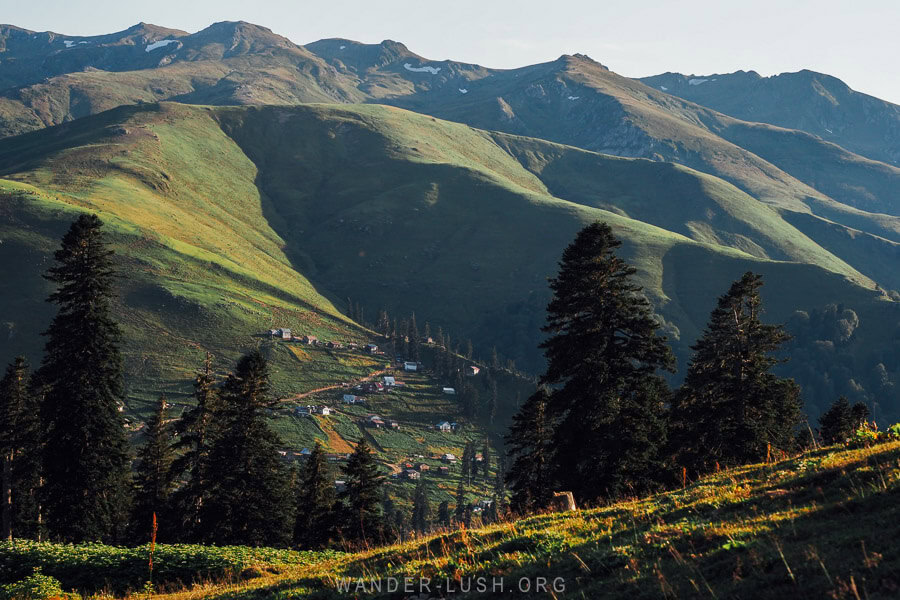
At 1,950 metres above sea level, Bakhmaro is the highest climactic resort in Georgia and one of two popular mountain destinations in Guria Region, the other being Gomismta. This is an off-the-beaten path destination, offering hiking and sublime sunsets in summer, and backcountry skiing and snow cat expeditions in winter.
Bakhmaro is known for its mineral waters, spruce forests and clean alpine air. In summer, cloud chasing is a popular pursuit – cool air rising off the Black Sea mingles with the Meskheti Range’s alpine atmosphere to plaster the mountaintops in a thick blanket of cotton wool mist. Visit on August 19 for the annual the Bakhmaro Cup, a lively horse race and cultural celebration. Amongst the A-frame house built by holidaymakers and local shepherds who summit the mountain in June to graze their livestock on summer pastures, you will find a growing number of cottages for rent.
Why visit Bakhmaro in 2025?
A new sealed road means any car can get up to Bakhmaro from Chokhtauri, while a new arterial connecting Bakhmaro and Upper Adjara will create more opportunities for driving and hiking across the two regions.
10. Racha-Lechkhumi: An alternative mountain getaway
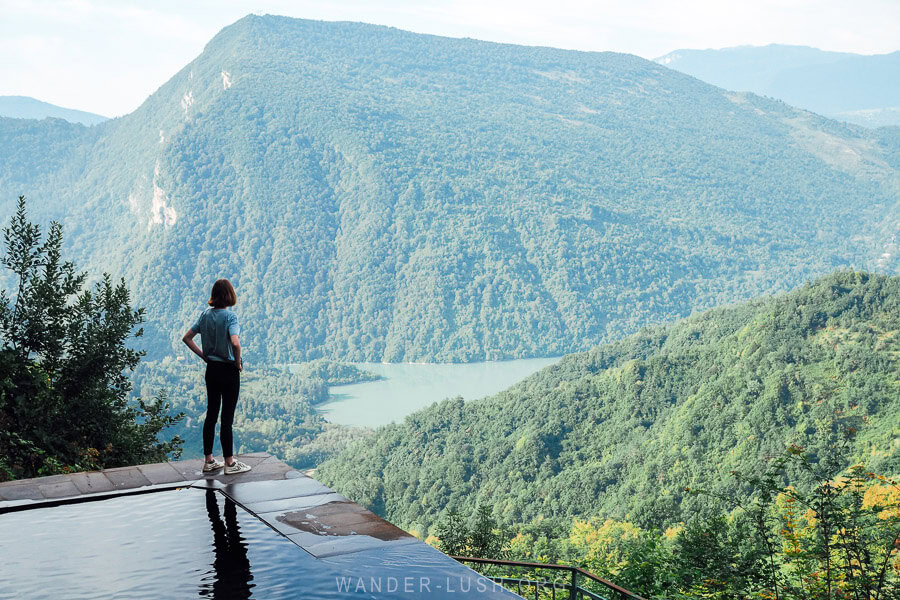
Next door to Svaneti in the western highlands, Racha and Lechkhumi are two distinct and completely underrated mountain areas that are both easily accessible from Kutaisi. Like Khevsureti, this area combines nature and culture, with a combination of quiet hiking trails, atmospheric family wineries and alpine villages.
The town of Oni, specifically Family Hotel Gallery, is my homebase of choice in the region. Once home to a large Jewish community, Oni features a huge synagogue and a sweet Local Lore Museum. Racha is known for its distinct cuisine (lori cured ham and shkmeruli, a rich garlic chicken dish) and Khvanchkara, a semi-sweet red wine made from a blend of two local grapes. A wine tasting accompanied by a grazing plate of Rachan delicacies is a must, and there are plenty of family wineries that welcome guests for just that. Margvelidze in Sadmeli is my top pick.
To the west, Lechkhumi is characterised by limestone rock formations (including the stunning Sairme Pillars), steep cliffs and soaring peaks. Follow the new road up to the village of Lailashi for a dip in the Lailashi ‘Secret Pool’ or Okronishi Fountain, perhaps Georgia’s most spectacular infinity pool. Tchrebalo Wine Cellar is a nice road stop along the way. To the north-east, Upper Racha resembles Switzerland with its sweet villages and rolling hills. While Shovi remains closed following the tragic landslide in 2023, the villages of Utsera, Ghebi and Gona remain accessible.
Why visit Racha-Lechkhumi in 2025?
Racha-Lechkhumi is always at the top of my recommendations. While it remains a very seasonal destination, the proliferation of glamping resorts and restaurants (including Tchrebalo Wine Cellar and Kesane outside Ambrolauri) are a testament to its growing popularity.
Get there: There are marshrutka vans to Oni from Tbilisi (4 hours) and Kutaisi (3-4 hours), but it’s preferable to drive yourself.
Where to stay: Oni is the ideal place to base yourself in Racha. Family Hotel Gallery is the leading accommodation in town – contact Nika through Facebook and put in a request to stay in the self-contained room above the family’s wine cellar. The ancestral wooden house is pure magic.
Further reading: Things to do in Oni and Racha.
Travel Georgia Like a Pro
Planning a trip to Georgia? Here are 5 essential resources that I recommend you check out.
- For private transfers in Georgia: GoTrip.ge. Find a professional, English-speaking driver. Prices are locked in when you book & you can stop wherever you want.
- For hiring a car in Georgia: Local Rent. Save money when you rent directly from a local agent. Pick-up & drop-off are available from any address in Georgia.
- For finding accommodations: Booking.com. This website has the biggest selection of properties in Georgia, including guesthouses in rural areas.
- For Tbilisi tours & day trips: Friendly.ge. Friendly.ge has knowledgeable guides, safe drivers & creative itineraries. I especially like their off-road tour to David Gareja.
- For tailored advice: Book a call with me! My Georgia Travel Consultation service is perfect if you need feedback on your itinerary or personalised travel tips.
Cities in Georgia
Georgia’s regional capitals all offer visitors something unique. To add to those already mentioned above, here are 8 more cities in Georgia that make a terrific base for exploring.
11. Batumi: Gateway to the Black Sea Coast
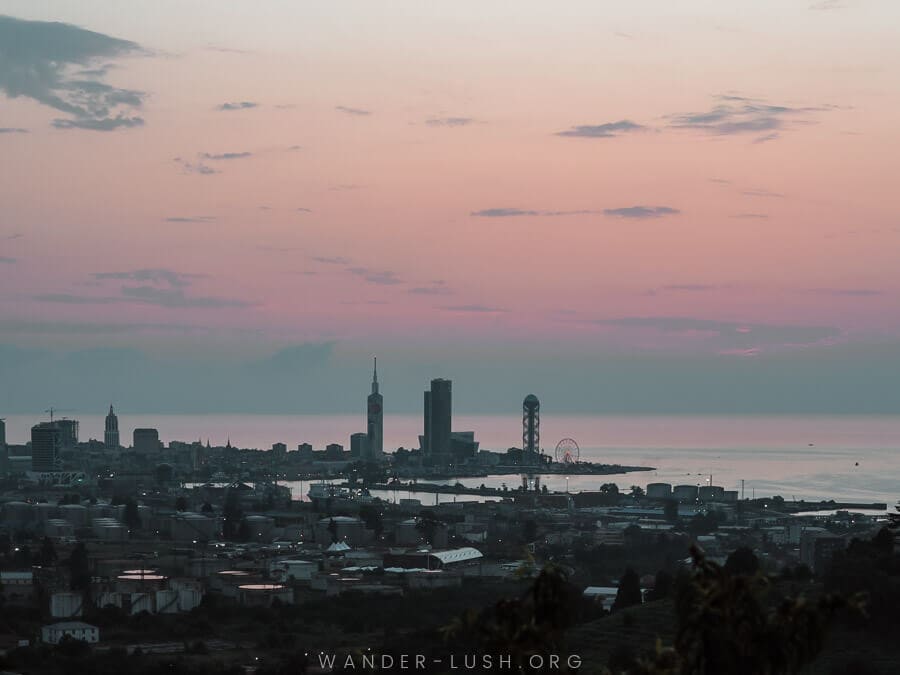
Georgia’s biggest Black Sea resort city has a reputation for being ‘the Las Vegas of the Caucasus’. In the past few years, Batumi has shown us it is so much more than that. Living in Batumi showed me a different side of the city, and I now consider it one of my favourites in Georgia.
Batumi still centres on the same old stretch of sand (or should I say, pebbles) that has been attracting summer tourists for centuries. But away from the shoreline, there is a slew of cool cafes, creative spaces and an excellent street art scene. Love it or hate it, the outlandish modern architecture is a highlight, and the Old Town is full of surprises. Add a lively produce market, a scenic aerial cableway, some great urban hikes, and access to some of Western Georgia’s best national parks to the mix, and you have an all-round excellent destination.
Another perk of visiting Batumi is getting acquainted with distinctive Adjarian culture and cuisine. This is the birthplace of the famous Adjaruli Khachapuri and a range of other indulgent delicacies, including my personal favourite, Borano (melted cheese smothered in hot butter).
Walk or cycle Batumi Boulevard, an idyllic pathway that stretches along the seafront. If you’re feeling adventurous, you can cycle all the way to the Turkish border. Batumi Botanical Garden, a gorgeous green space on the coast north of the city, has easy hiking trails and panoramic Black Sea views. My guide to the 10 best Batumi day tips shows you where else to go beyond the city.
12. Mtskheta: The old capital
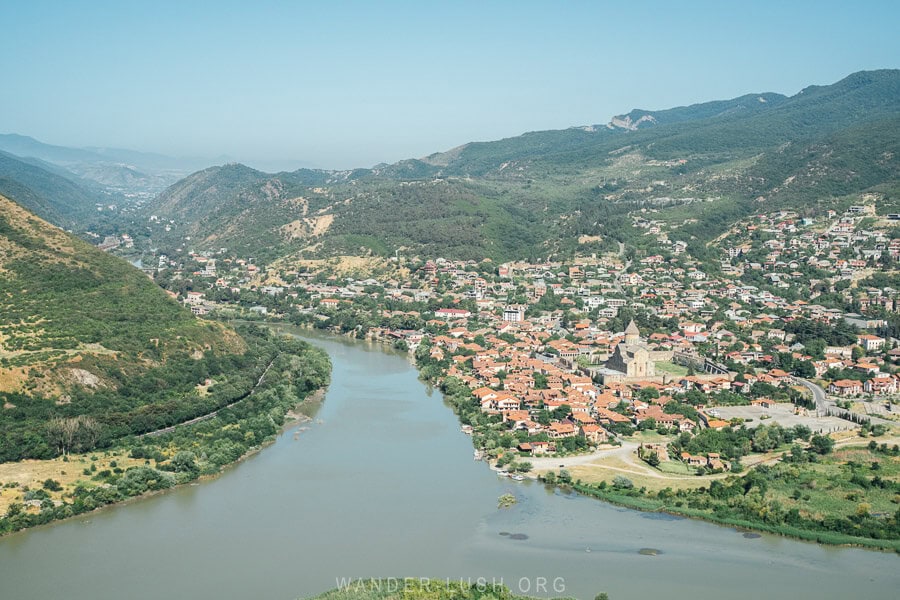
One of the oldest cities in Georgia and the kingdom’s capital for almost a millennium, Mtskheta is located just 20 km from Tbilisi and is a popular day trip destination. It is easy to reach by marshrutka or taxi in under an hour, and can be combined with a visit to Gori (see below) or used as a stopover on your way from east to west.
Mtskheta played a pivotal role in the evolution of Christianity in Georgia, and the small city is packed with important churches as a result. One of the nation’s four UNESCO World Heritage Sites, the Historical Monuments of Mtskheta, is located here and comprises a set of monasteries noted for their frescoes and inscriptions in an early version of the Georgian script.
The 11th-century Svetitskhoveli Cathedral sits proudly in the middle of the city and gives Mtskheta its overall structure. Georgia’s second-largest religious building behind Sameba in Tbilisi, the location for the monumental structure is said to have been chosen by one of Georgia’s patron saints, St. Nino, herself. Georgia’s answer to Westminster, this is where kings were coronated and later laid to rest. At least 10 monarchs enjoy their eternal slumber beneath the heavy stone floor.
Jvari Monastery, built in the 6th century on a hill above Mtskheta, is a must-visit in Georgia. The church itself is quite modest inside, but the view from the churchyard – a stunning panorama of the confluence of the Mtkvari and Aragvi rivers, one blue and the other emerald – is simply breathtaking.
Get there: Marshrutka vans to Mtskheta depart from early until late from Didube Bus Station, with a journey time of under 60 minutes. For a more indepth experience, I recommend a guided half-day tour from Tbilisi such as this one.
Further reading: 10 things to do on a Mtskheta day trip.
13. Gori: More than the Stalin Museum
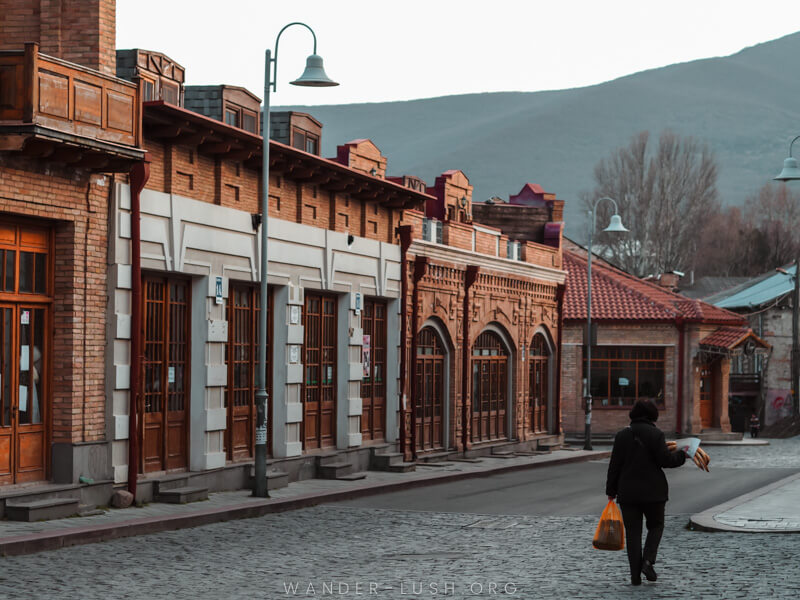
The birthplace of Joseph Stalin and home of the Stalin Museum, Gori is Georgia’s premier dark tourism destination. Visiting the museum – which includes Stalin’s birth house and armoured train carriage – is a trip to say the least.
While Stalin is certainly the city’s main claim to fame, there’s a lot more to Gori than that. Once a pitstop on the Silk Road, the city sits at the foot of a massive hill crowned with a distinctive stone fortress that cascades down towards the river’s edge. Climb to the top of the fortress for views over the plains of Shida Kartli – or for even better views, venture further to Gori Jvari church, a short taxi ride or hike from town on the opposite bank of the river.
Gori is a peaceful city with lots of parks, tidy streets, and trellises covered in vines dripping with grapes. The main street is lined with cafes and ice cream shops. Gori’s old town features some interesting brick architecture and backs onto a wonderful undercover produce market. Set aside some time to visit the Great Patriotic War Museum, which documents the 2008 conflict that unfolded just a few dozen kilometres away and impacted the city profoundly, and don’t miss a meal at Shin da Gori, an atmospheric restaurant run by local actress and entrepreneur Keta Lortkipanidze.
14. Telavi: Hub of the wine region
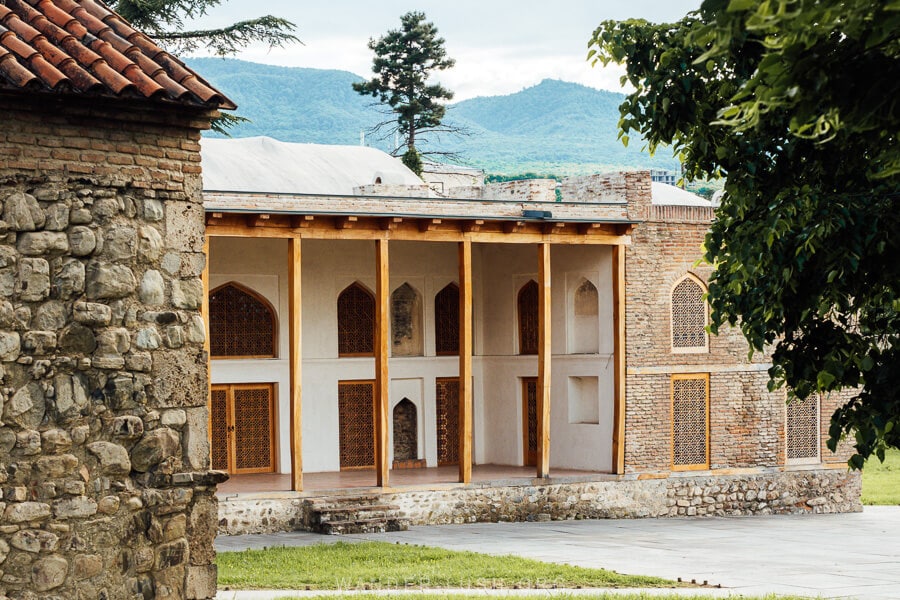
Telavi is the biggest city and main transport hub in Kakheti, Georgia’s humongous eastern region. Its position in the Alazani Valley makes it a great base for travelling the Wine Route (as described above) and for visiting the many medieval monasteries, churches and castles that stud the Kakhetian countryside. It is not as charming as Sighnaghi, but it is far more dynamic and for want of a better word, less ‘touristy’.
Telavi was the capital of the Kingdom of Kakheti from the 10th-12th centuries, and again in the 17th century. Historians often refer to it as the most ‘medieval’ city in Georgia because it’s the only place where monuments from four historical periods stand intact side by side. The Historical Museum and restored palace of King Erekle II, both encircled by fortress walls, are must-sees.
Telavi is a very pleasant, walkable city, with a cobbled Old Town featuring restored Kakhetian balconies and a buzzing undercover bazaar. There is an abundance of restaurants, wine bars and family run cellars to indulge in, with my top pick being Odlisi Cheese. The mammoth Alaverdi Cathedral lies nearby along with the ruins of the Ikalto Academy where Georgian literary hero Shota Rustaveli studied. The Tsinandali Estate, former home of the noble Chavchavadze family where the first European-style Georgian wines were produced, is now a house museum and winery. If you fancy a splurge, there’s an outstanding Radisson Collection hotel on the property.
15. Zugdidi: Samegrelo’s royal connection
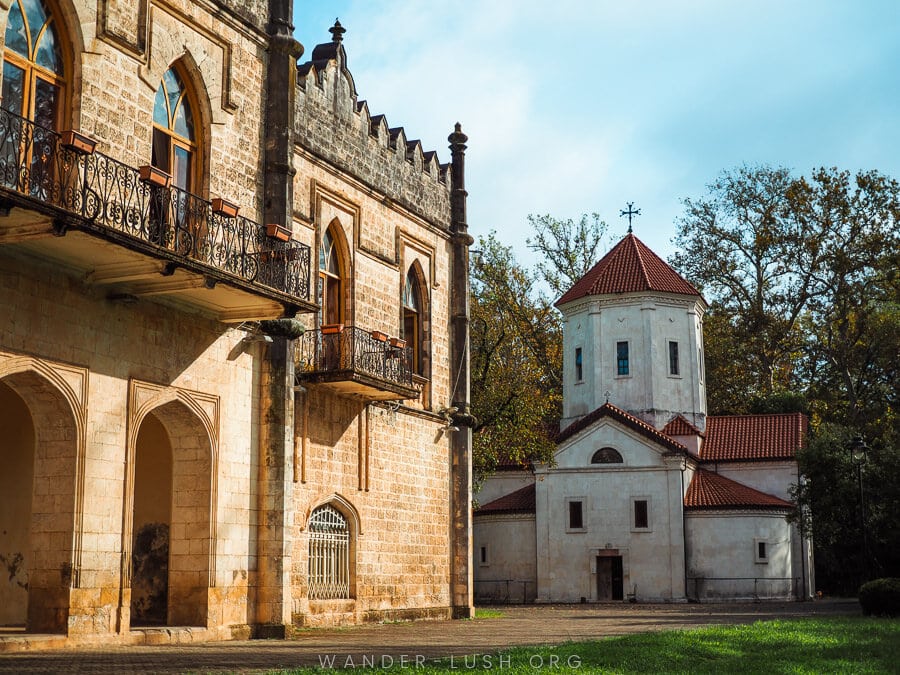
The biggest city in Georgia’s Western Samegrelo Region, Zugdidi is the place to immerse yourself in Megrelian culture and cuisine. Most people stop here for a few hours on the way up to Svaneti, but it’s worthwhile spending a night in Zugdidi to break the journey – even if it’s just to eat at Diaroni, one of Georgia’s best restaurants. The specialty here is of course Megrelian food: Rich kharcho stew, stringy elarji cornmeal, and creamy gebzhalia.
In Zugdidi, you can learn about the legacy of the Dadiani family, Samegrelo’s former rulers. The surreal Dadiani Palace, adjoining Levan Dadiani Palace (which just reopened after restorations) and the family’s private gardens (now the city Botanical Gardens) is unlike anything else you’ll see in Georgia. It’s worth the museum ticket price to see the eerie bronze Napoleon Death Mask (the French connection is totally unexpected and fascinating!).
Other things to do in Zugdidi include a side trip to Rukhi Castle for a view of Abkhazia, watching master potters make black-smoked ceramics at Orkol Studio, seeking out the many Soviet-era mosaics in the area, and roaming the undercover market for authentic adjika, a delicious spice blend that has its roots in the west.
16. Akhaltsikhe: The castle city in the south
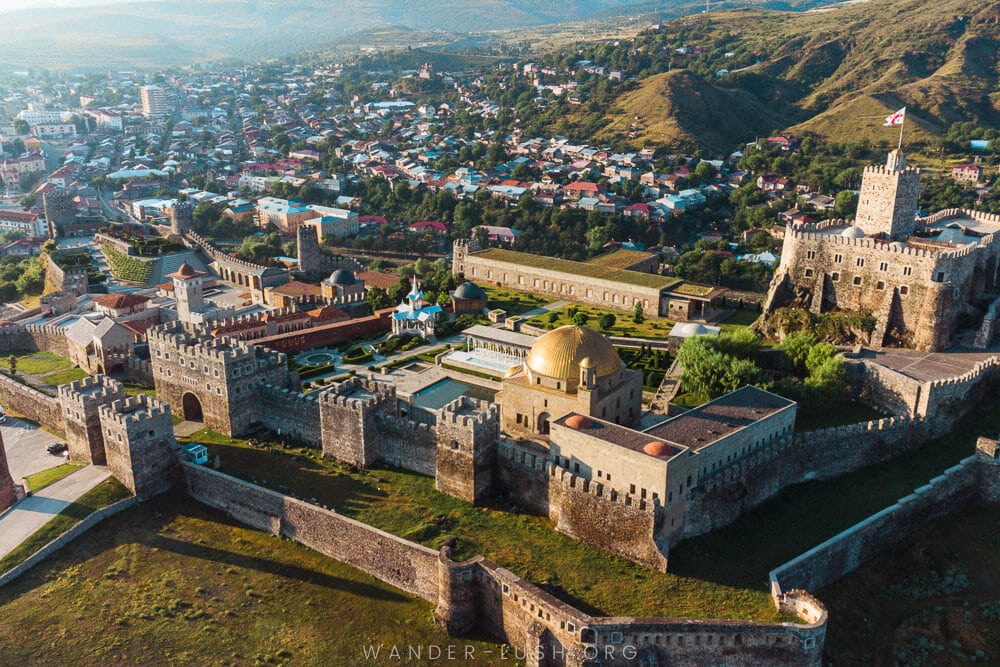
Located in Meskheti Region in south-western Georgia, just shy of the Turkish border, Akhaltsikhe is a small city of under 50,000 people. With direct buses to Gyumri and Yerevan in Armenia, it is a convenient place to depart for the border crossing at Bavra – and a good base for visiting the cave city of Vardzia, too.
Akhaltsikhe is small but very multicultural and with a long history that spans Ottoman, Mongol and Iranian rule. The main attraction is Akhaltsikhe Castle (AKA Rabati Castle), the massive hilltop fortress that gives the city its name. Established in the 9th century as Lomisa Castle, it received a mosque and madrasa during the Ottoman period and was gradually added to over the intervening years to become an ad-hoc complex of watch towers, fountains, domed buildings and gardens. In 2011, it underwent extensive renovations – some say a little too extensive – and now it feels a bit like the set for an off-script episode of Game of Thrones.
Don’t miss climbing up the hill to St. Marine’s Church for a view of the castle from afar. Also in the area, Sapara Monastery and Khertvisi Fortress are worth checking out.
Get there: With no train service, the only way to reach Akhaltsikhe from Tbilisi is by road. I recommend a private car for the longer but far more scenic route via Javakheti, visiting the lakes and Vardzia on the way. Hire your own sedan through Local Rent (highly recommended) or find a driver on GoTrip.
Where to stay: Old Street offers comfortable rooms behind a heritage facade on the main street leading up to the castle. The owners are extremely kind and can help with organising transport to Vardzia and elsewhere.
Further reading: 17 things to do in Akhaltsikhe.
17. Poti: ‘Little Paris’ on the Black Sea

Otherwise known as Georgia’s ‘Little Paris’, Poti is a fascinating and underrated city on the northern part of Georgia’s Black Sea Coast. It is known for being home to the country’s deepest sea port and is connected to Tbilisi by Georgia’s oldest railway line. Former city mayor Niko Nikoladze is considered the founding father of Poti. At the turn of the 20th century, he oversaw the design of the small city by German architect Edmund Frick. Poti is very tidy, with symmetrical blocks and parallel streets that radiate out from a central park.
Inaugurated in 1864 as the first navigational facility of its kind in Georgia, the Poti Lighthouse beckons visitors to climb its candy-striped steps for a sea and city panorama. Poti is pancake flat, so you can see all the way down to Kolkheti National Park, an incredible landscape (and UNESCO World Heritage Site) that offers boat trips along the Paliastomi Lake and the marshy wetlands.
The streets of Poti are filled with heritage Art Nouveau architecture, lion statues fringed by palm fronds, and yes, more mosaics and street art murals. To learn the history of Jason and the Argonauts, who apparently made landfall at Poti before making their way up the Rioni River to Kutaisi and Vani, visit the Kolkheti Culture Museum. Okros Tba (‘Golden Lake’), a long, narrow lake sandwiched between Paliastomi Lake and the coast, is a beautiful place to watch the sunset. Don’t miss the nearby WWII Memorial.
Get there: The daily train from Tbilisi to Poti takes 6.5 hours and is a fine way to travel. You can also pick up this train in Kutaisi (Rioni). Marshrutka vans to Poti are available from Kutaisi, Batumi, Zugdidi, and elsewhere in Western Georgia.
Where to stay: Express Inn is a modern boutique guesthouse close to the lighthouse. Rooms are very stylish and comfortable, and host Nika is easygoing and helpful.
Further reading: My complete guide to visiting Poti.
18. Rustavi: A former Soviet monotown
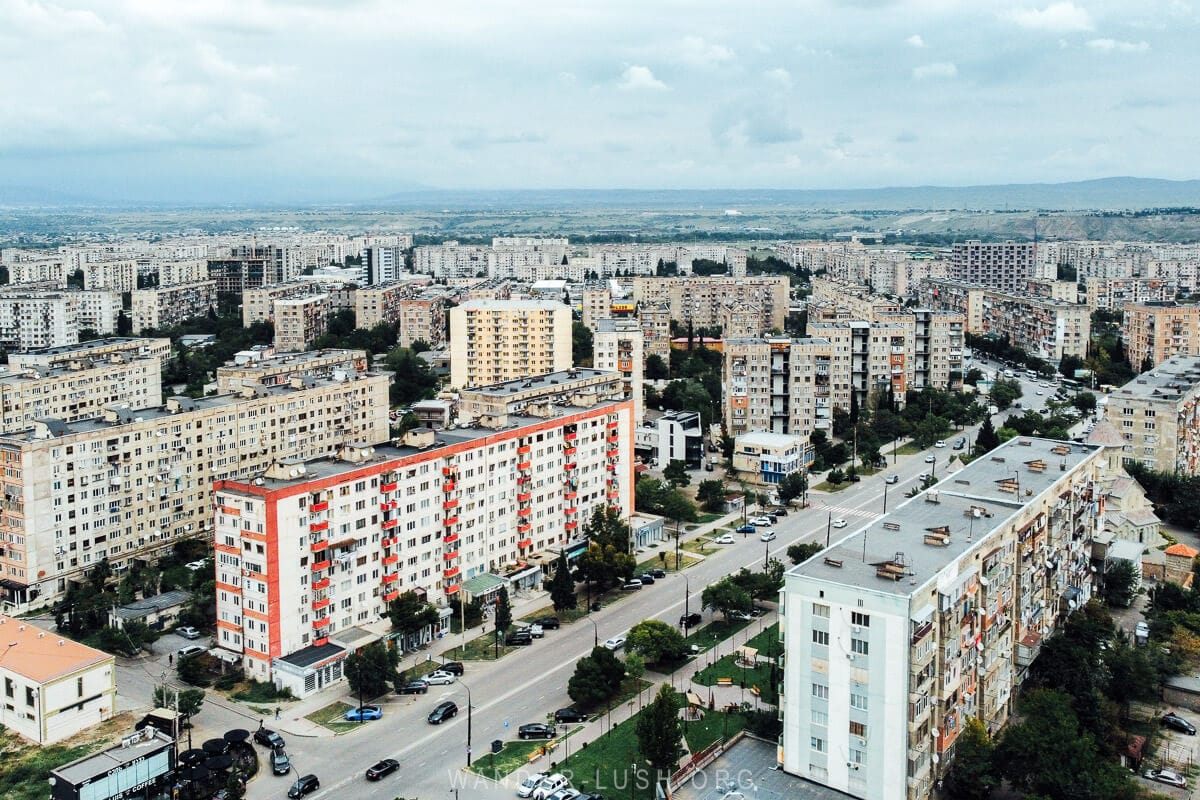
Under an hour’s drive from Tbilisi, Rustavi is Georgia’s third-biggest city and an alternative day trip from the capital. Founded in its current form as a ‘Soviet monotown’, the entire city was built up around the Rustavi Metallurgy Plant, which opened in 1948 as one of the region’s biggest steel producers.
As you might expect from an industrial city, Rustavi is a treasure trove of Soviet-era throwbacks. The newer part of town is dominated by concrete apartment blocks divided into micro districts. On the opposite side of the Mtkvari River, a different style of Stalinist Empire architecture prevails. Highlights include the Mayor’s Office, Drama Theatre, Musical School and Railway Station. The Rustavi Metallurgy Plant is still operational today. I have heard some reports of visitors being allowed inside – I wasn’t so lucky, but I will keep trying! Admire the bas-reliefs on the monumental facade, and find the preserved mosaic. More stunning mosaics can be found inside the Rustavi swimming pool.
Rustavi’s history goes back much further than the Soviet period: Learn about its ancient foundations at the small local museum, which also contains a fascinating exhibition on the steelworks. A stroll through the massive Park of Culture and Rest leads you to the ruins of Rustavi Fortress, a great place to watch the sunset over the lake. Don’t leave without visiting Cafune, a trendy social enterprise cafe on the river that serves incredibly delicious food (the panko chicken with Georgian bazhe walnut sauce is my top pick!).
Get there: City buses and marshrutka vans travel nonstop between Tbilisi and Rustavi throughout the day. There are various departure points around the city, including out front of Tbilisi Central railway station.
Where to stay: The Soviet-era Hotel Rustavi is a blast from the past. Behind the monumental facade and very 80s lobby, rooms are surprisingly tidy and comfortable.
Further reading: 12 things to do in Rustavi.
19. The Military Highway: Georgia’s best road trip
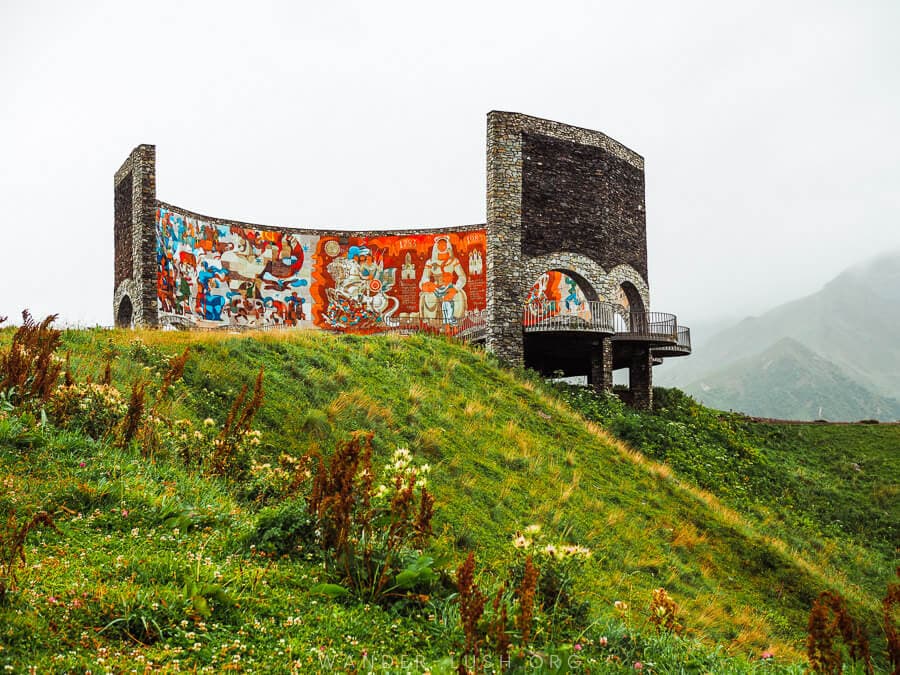
Whoever said it’s all about the journey rather than the final destination must have been referring to the trip up to Kazbegi from Tbilisi. As grand as Gergeti Trinity is, it’s really just a small taste of the landscapes you will see along the Georgian Military Highway.
This mighty arterial is currently the only thoroughfare connecting Georgia and Russia. There are plenty of places to stop along the way, including Ananuri Fortress, the mosaic-laced Friendship Monument at Gudauri, various mineral water springs, curious stone head sculptures, and mountain viewpoints. Lunch in Pasanauri, a small village on the highway known for its khinkali, is a must. I highly recommend Restaurant Korbuda for delicious dumplings and khachapuri.
In wintertime, Gudauri transforms into Georgia’s best ski resort. Hitch a ride on the incredible Gudauri-Kobi Cable Car to break up the journey by road and score impeccable views of Mount Kazbek.
20. Sno Valley & Juta: The Georgian Dolomites
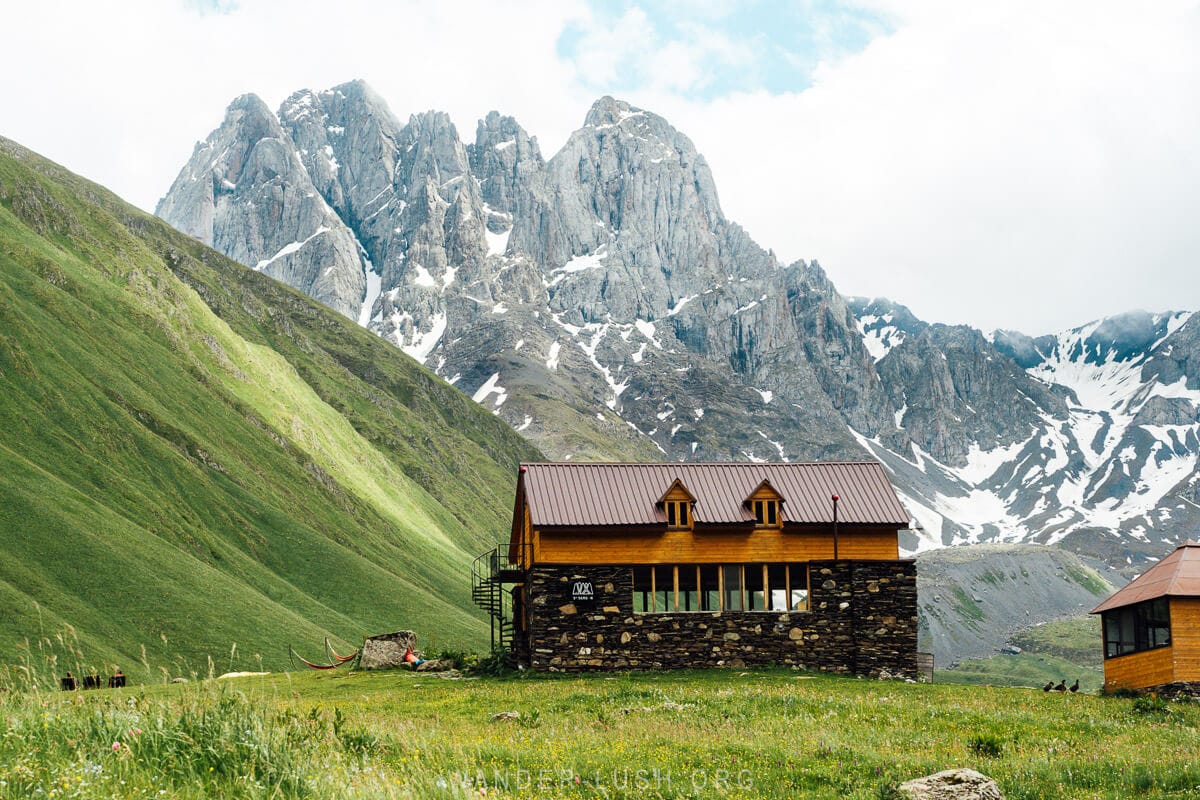
If hiking and/or sublime mountain scenery is high up on your agenda for Georgia, check out Juta, one of the valleys that shoots off the Georgian Military Highway enroute to Kazbegi. Dubbed the ‘Georgian Dolomites’, this area is characterised by tapered stone peaks and alpine lakes. Chaukhi Massif is the defining landmark and provides a backdrop for the 8-kilometre Juta Valley day hike.
The trail continues deeper into the mountains, turning into the challenging Chaukhi Pass that takes you over the mountains into Khevsureti. On the way into Juta, stop off in Sno village where you will find a magical landscape of wildflower fields scattered with massive ‘stone head’ sculptures. The work of a local artist, these monoliths depict different figures from Georgian history and the arts.
21. Sighnaghi: Kakheti’s charming walled town
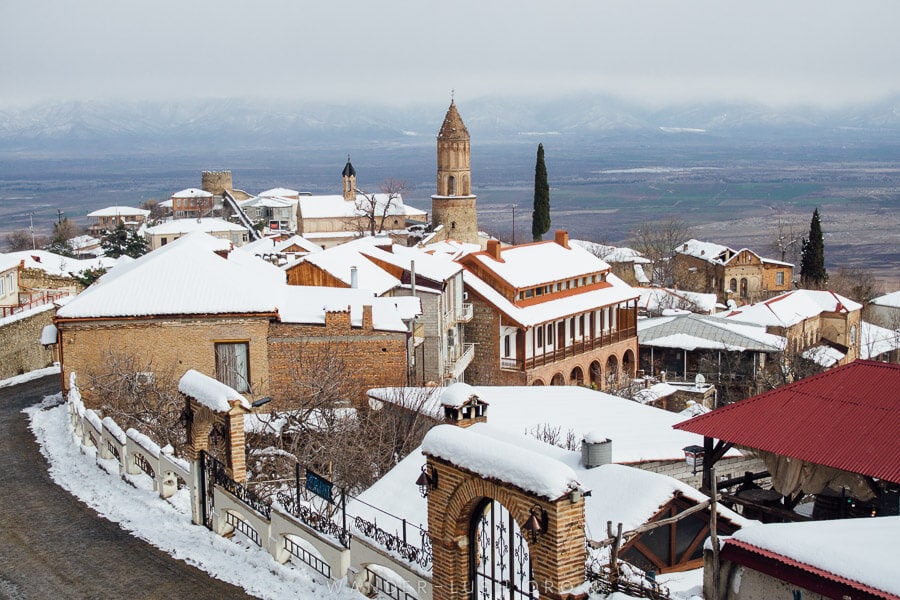
The pretty city of Sighnaghi is one of the main attractions in Kakheti Wine Region. Fortified by stone walls and with many of its ramparts still in tact, it sits on a hilltop overlooking the Alazani Valley and commands truly amazing views of the vineyards backed by the Caucasus Mountains (that is, if you’re lucky enough to catch it on a clear day).
Marketed as ‘the city of love’, Sighnaghi is certainly charming if not a bit contrived. While there are a few excellent wine cellars in town, you have to travel down into the valley to visit the vineyards, thus I maintain that Telavi is a much better base for a stay in wine country. One thing Sighnaghi does have going for it are its restaurants. Pheasant’s Tears is a highlight. The small museum with works by national painter Pirosmani, who was born nearby, is also worth a look in. And the beautiful Bodbe Monastery is located walking distance from Sighnaghi.
Get there: Take a shared taxi from Isani Metro Station to reach Sighnaghi in under 2 hours, or board a marshrutka van at Ortachala Station. If you are coming from elsewhere in the wine region, taxi is the smart choice as transport connections between towns are limited. See my Kakheti Transport Guide for more tips.
Where to stay: Zandarashvili Guest House is a popular choice for budget and mid-range travellers. The family are old-hands at hosting tourists and can help with everything from tours and transport to supra feasts. For something more luxurious, Lost Ridge Inn on the outskirts of town has a brewery and ranch onsite.
Further reading: 10 alternative things to do in Sighnaghi (published soon).
22. Borjomi: Hot springs & Romanov history
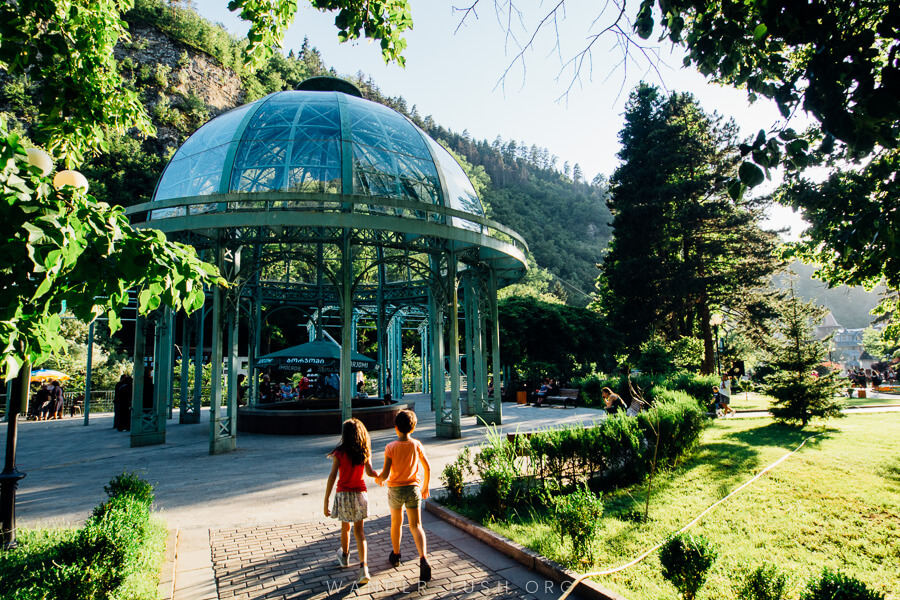
Sitting almost smack-bang in the centre of the country, the resort town of Borjomi has long been a favourite summer retreat in Georgia. Blessed with fresh mountain air and natural spring waters, there’s not a whole lot to do here except relax and sip on Borjomi Mineral Waater, one of Georgia’s most popular beverages and biggest exports.
People have been imbibing, bathing in and bottling Borjomi’s curative waters since medieval times. But it was in the 1840s when the Russian Viceroy brought his daughter to Borjomi for health treatment that things really started to take off. By the 1860s, the resort town was booming, and many members of the Imperial aristocracy built their summer residences in the area. Under Communism, these mansions were turned into sanatoria for the party elite.
Today, Borjomi is still a popular warm-weather destination that is always buzzing with families in the summer months. The small town revolves around Borjomi Central Park and Ekaterina’s Spring (the original water spring named after the Viceroy’s daughter). BYO drinking bottle and fill up on Borjomi water straight from the source. There’s also open-air thermal baths and a cable car you can ride up to a scenic plateau.
In the mountains above Borjomi, the resort town of Bakuriani is a popular winter ski resort. Borjomi-Kharagauli National Park has excellent short and multi-day hiking trails and a longer season compared to the northern mountains.
23. Uplistsikhe: Georgia’s oldest Cave City
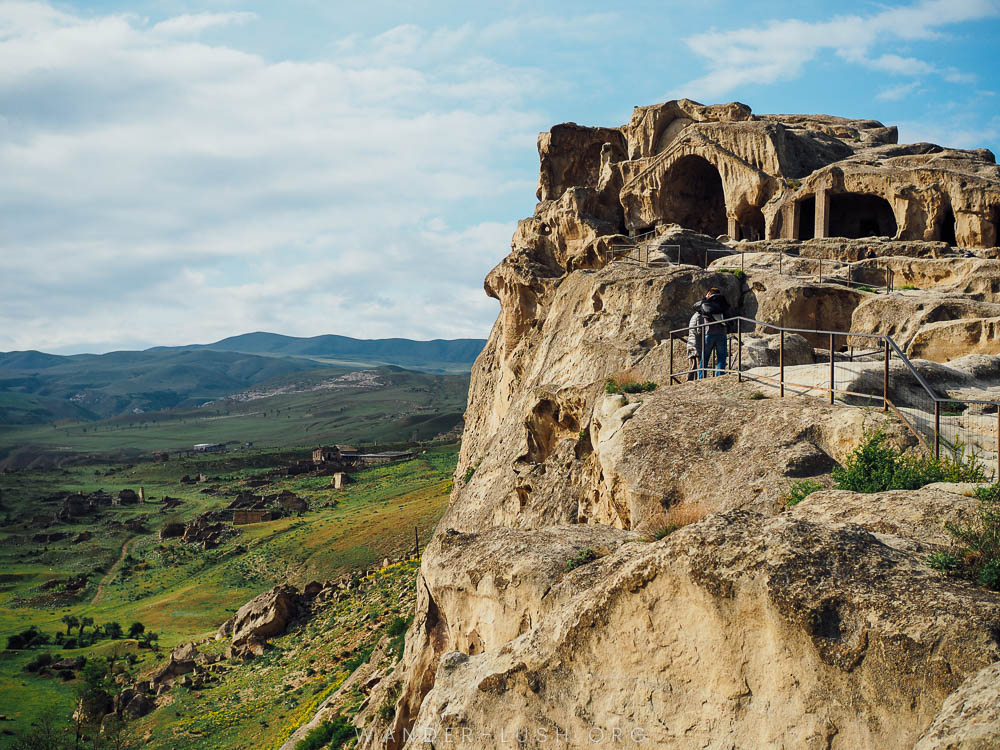
Though not as spectacular as Vardzia, Uplistsikhe is the most accessible cave city in Georgia. It is older than its counterpart, with some structures dating back to the Early Iron Age. Uplistsikhe has a different profile – it is spread out along a rocky river bank and is more horizontal than vertical. The moon-like landscape of grottos and caves enveloped in folds of rock is really fun to explore on foot. It is well sign-posted, too. From the higher parts of the complex you get amazing panoramic views of the Mtkvari River Valley.
It is very easy to visit Uplistsikhe from Gori using either the local marshrutka bus or a taxi. I recommend going as early as possible because it does get very hot on the exposed rock face.
Get there: Uplistsikhe is 20 minutes east of Gori. Take a taxi from the carpark outside Chinebuli Restaurant for 20 GEL one-way or approximately 50 GEL round-trip, including waiting time at the caves.
Further reading: My detailed guide to visiting Uplistsikhe Cave City.
24. David Gareja & Udabno: Mysteries in the desert
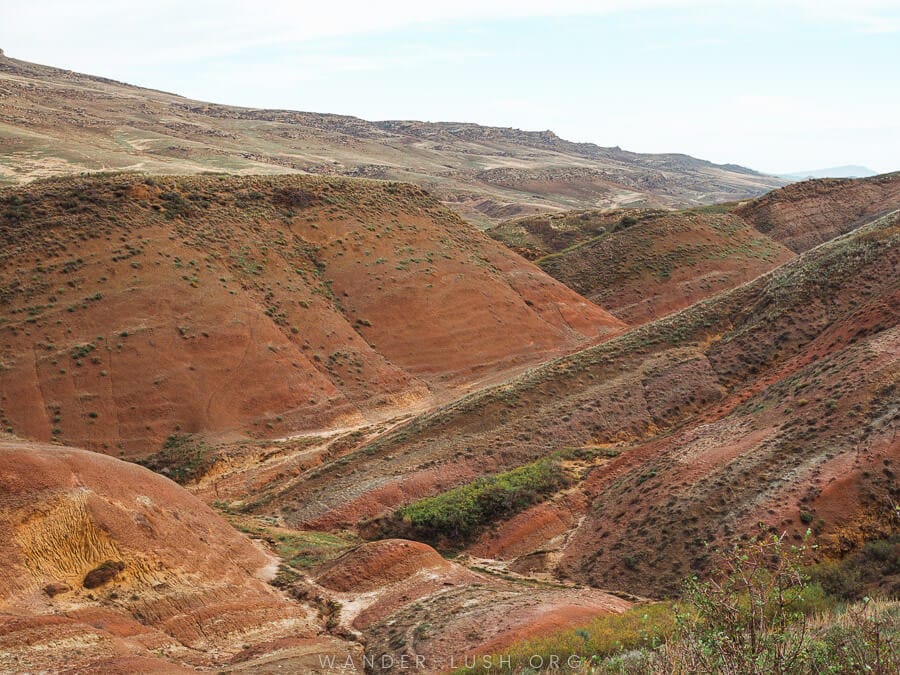
A third cave monastery in Georgia, David Gareja (AKA Davit Gareji) is located at the southern end of Kakheti Region on the border with Azerbaijan, around 2 hours’ by car from Tbilisi. Named after the religious figure who sought refuge in this part of Georgia with his band of devotees, the David Gareja Monasteries (plural) are a series of cave dwellings and cloisters of various sizes scattered around the semi-desert landscape – some on the Georgian side of the border and some in Azerbaijani territory. The most well-known is Lavra and Udabno, twin monasteries that incorporate cave chambers, underground chapels and rock niches painted with beautiful frescoes.
I was lucky enough to visit David Gareja in 2017 when the entire complex was open and you could still walk a ridge-top track for a view of Azerbaijan. Part of the complex is now closed off due to an ongoing border dispute. You can still visit David Gareja and see parts of Lavra Monastery – I update this guide frequently to include the latest information about closures and safety. There is no public transport to David Gareja, so the best option is to join one of several day trip options from Tbilisi. Or you can use Gareji Line, a minivan transfer service from Tbilisi that operates every day in the high season.
Udabno means ‘desert’ in Georgian, and that just about sums up the desolate landscape surrounding David Gareja. Hiking trails crisscross the ‘rainbow hills’, colourful striations of rock created by mineral deposits. If you visit Udabno after heavy rain, you will see cloudy pink lakes that look like big puddles of strawberry milkshake. The Oasis Club has breathed new life into Udabno and is a great place to break for lunch when hiking. More exciting projects associated with the Udabno Regenerative Farm by Adjara Group (the team behind Rooms Hotels) will be coming to this area soon.
Get there: Sign up for an organised day trip from Tbilisi that pairs Udabno with David Gareja (my top pick is this offroading group tour with Friendly.ge – use wanderlush for 10% off), or use the Gareji Line transfer service mentioned above. You can also self-drive: the road is paved and easy to manage.
Where to stay: In Udabno, I recommend staying at Oasis Club, a Polish-run hostel with private bungalows.
25. Tskaltubo: Semi-abandoned Soviet spa town
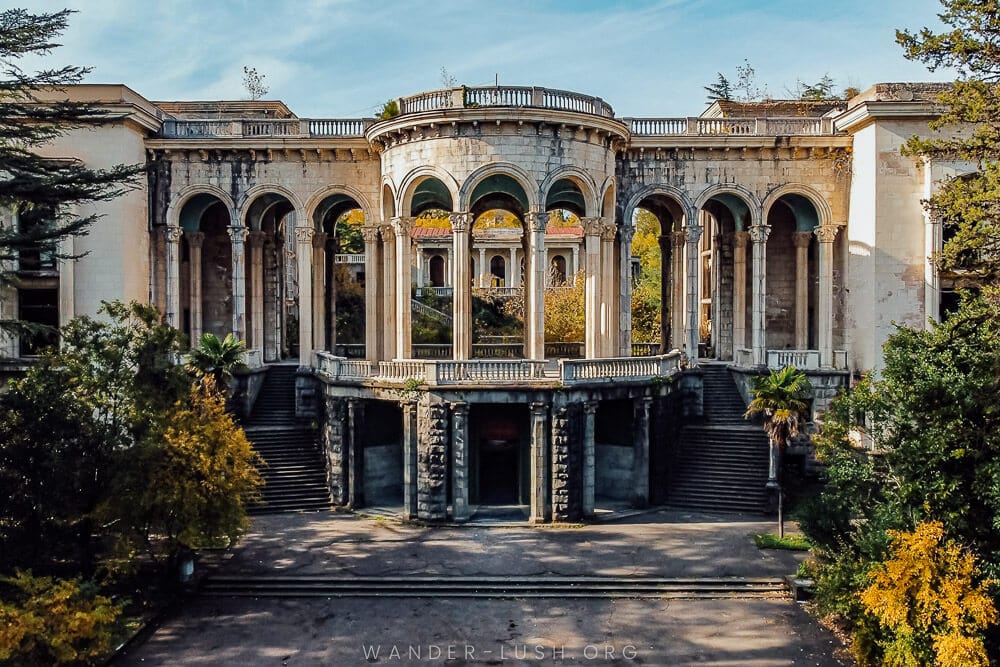
An alternative day trip from Kutaisi, Tskaltubo is a spa resort town just 20 minutes by local bus from the city centre. It is famous for its radon-carbonate mineral springs – the so called ‘Waters of Immortality’ – that bubble up from the ground at a pleasant 33-35 degrees Celsius. Much like Borjomi, Tskaltubo rose to prominence in the Soviet era as a destination for state-mandated workers’ respite. During the 1950s, more than 120,000 people visited the balneology resort and its 19 sanatoria every year, and there was even a direct train service from Moscow.
The small town is built up around a gorgeous park with a series of bathhouses hidden inside. Around the edge of the park, there are huge resort buildings – each with elaborate entrance halls and ballrooms, collanaded terraces, spiralling staircases and domed atriums. Most (but not all) of these sanatoria were abandoned after the fall of the Soviet Union and stripped of anything valuable (tiles, pipes, plasterwork). Nature eventually took over, turning these once-grand buildings into a playground for photographers and urbexers.
In the 1990s, several of the larger sanatoria were used to house IDPs who fled from Abkhazia during the war. Most families were relocated in 2022/23 after the larger sanatoria were auctioned off. Restoration works have already begun – Tskaltubo is changing fast. For now, the former Military Sanatorium remains the only renovated Soviet-era hotel in Tskaltubo. Spend a night at Tskaltubo Spa Resort for the full experience.
Get there: Just 20-30 minutes from Kutaisi by road, Tskaltubo has frequent marshrutka van connections (departing from the Red Bridge, close to Magnolia Hotel) or you can easily book a Bolt taxi for 20 GEL.
Where to stay: The renovated sanatorium, Legends Tskaltubo, is the only place to stay if you want the full Tskaltubo experience.
Further reading: My comprehensive guide to Tskaltubo and the sanatoriums.
26. Chiatura: The capital of cable cars
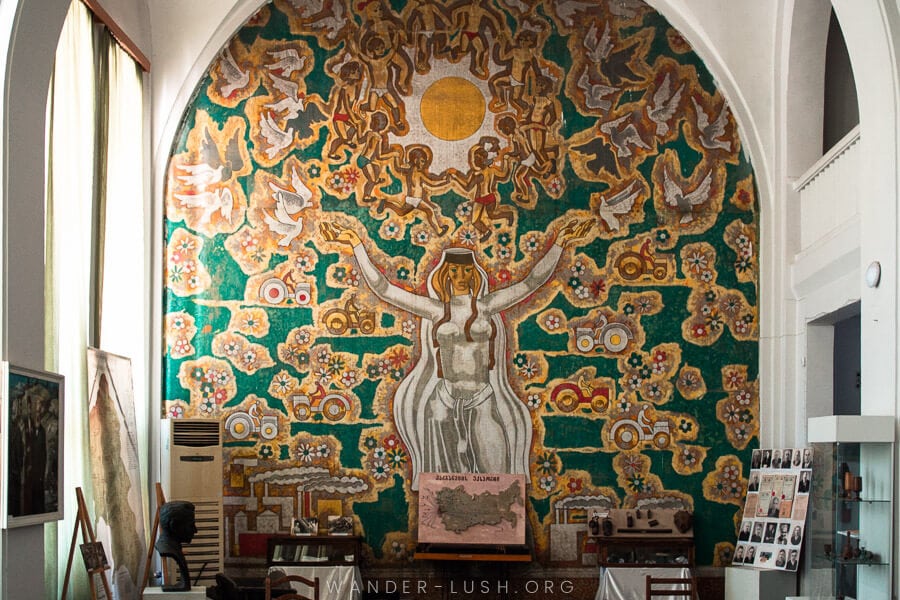
Also located in Imereti Region near Kutaisi, Chiatura is a must for urbexers, photographers, and anyone who is interested in Soviet history. During the USSR, this was a thriving city purpose-built around some of the world’s most productive manganese mines. When the state collapsed, so did the mines, and most families left. Many people still live in Chiatura today – but the city has a time-capsule, blast-from-the-past feel that piques many people’s curiosity.
‘Stalin’s Rope Roads’, a network of 17 cable cars that was erected over the valley from the 1950s onwards to shorten travel times and boost productivity in the mines, have all been decommissioned – but two of the historic lines have been restored and one reopened to passengers in late 2024. The four new gondolas that launched in September 2021 are not quite as thrilling, but still worth a ride.
While you’re in the area, also visit Katskhi Column, a striking monastery perched atop a tall limestone pillar.
Alternative & unique places to visit in Georgia
Once you’ve hit the highlights, discover the many offbeat and alternative destinations in Georgia. This section includes my favourite spots for urbex and Soviet history, plus unique cultural encounters, emerging hiking destinations, and more.
27. Anaklia: Surreal sculptures on the Black Sea
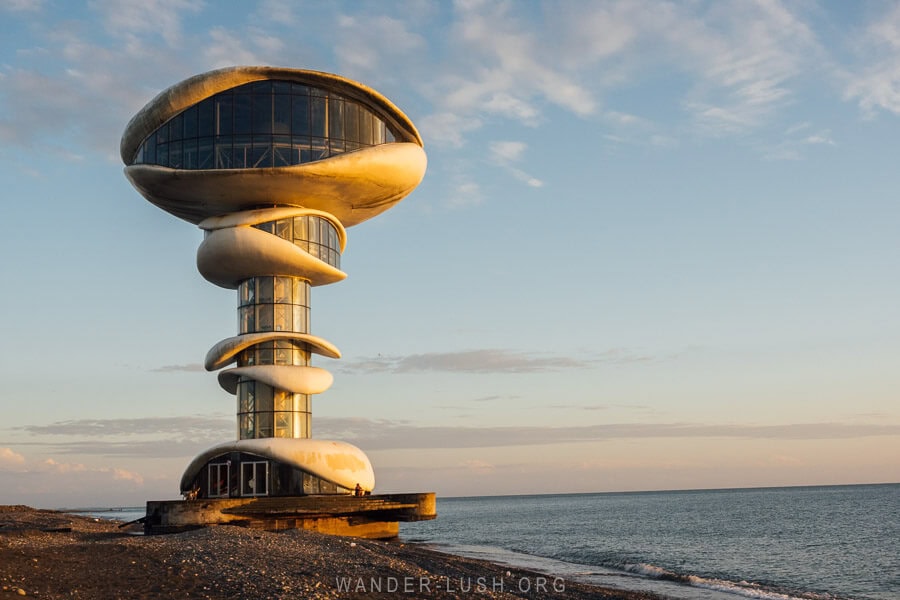
Located at the far-northern end of the Black Sea Coast, just shy of the Abkhazia separation line, Anaklia boasts some of the loveliest sandy beaches in Georgia. Grand plans to develop it into a Batumi-style resort would have gone swimmingly, I’m sure – but they were tabled long ago. Instead, Anaklia is set to receive Georgia’s first deep-sea port.
Reminders of what could have been dot the shoreline in the form of surreal sculptures and outlandish architecture. The Anaklia Tower never fulfilled its destiny as a tourism centre and restaurant… It sits abandoned on the beachfront adjacent to the 504-metre-long Ganmukhuri Bridge, one of the longest wooden bridges of its kind in Europe.
If like me you’re fascinated by dystopian scenes, Anaklia is a fun place to spend an afternoon. The deserted boulevard and all but empty beaches are eerily quiet for now – let’s see what the new port development project brings.
Get there: Anaklia is cut off from the rest of the Black Sea by a big section of roadless coast, thus the most convenient way to get there is via Zugdidi. Frequent public buses and taxis are available, taking 40 minutes to reach the sea.
Further reading: 10 things to do in Anaklia.
28. Tsikhisdziri: Crumbling palaces & cool beach bars
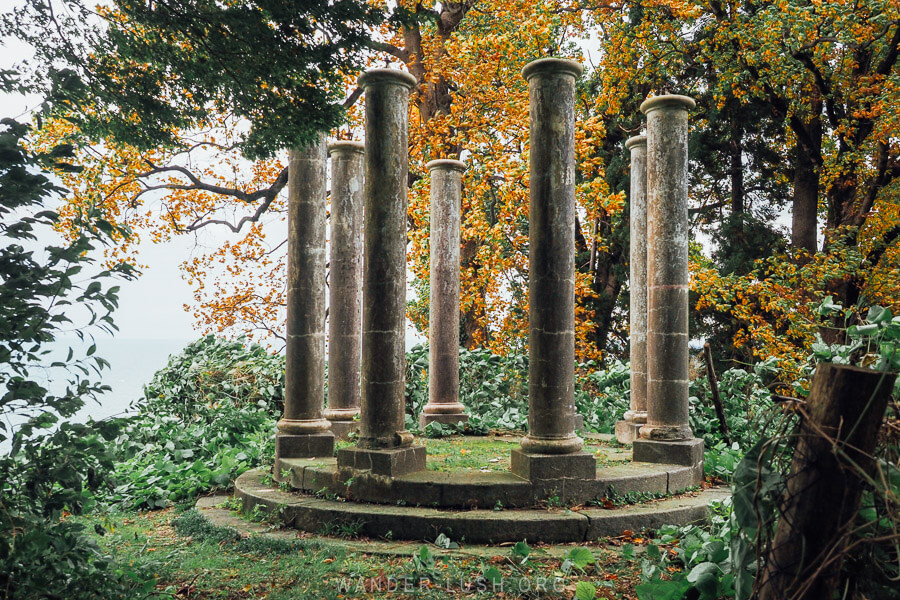
Batumi is not a place to swim: More attractive swimming beaches (and much cleaner waters) can be found to the north and the south of the city. The village of Tsikhisdziri sits on a section of the coast where there are no pebble beaches, but rather rocky cliffs. This, plus the thick groves of bamboo and banana trees, gives the area a dramatic appearance and a tropical feel.
Tsikhisdziri sits at the foot of the Roman-era Petra Fortress. Decaying dachas that once belonged to Russian generals have been left to nature and lie hidden in the thickets. Perched on a 24-metre-high rock that juts out into the sea, Castelo Mare is a hotel-resort that sits where the grand summer house of one General Skarzhinsky used to be. Shukura Tsikhisdziri is a hip beach bar partially set inside another of these forgotten mansions. It is connected to the water’s edge and a swimming deck by a long path known as the Palm Route.
Get there: Tsikhisdziri is a 40-minute drive north of Batumi via the old coastal road. Hitch a ride on a marshrutka bound for Kobuleti (just make sure the driver isn’t taking the new bypass road) or order a Bolt taxi for 30 GEL.
Where to stay: Staying at Castello Mare – a renovated mansion on the peninsula – is a surreal experience, especially if you get a room on the upper floor like we did.
Further reading: My complete guide to Tsikhisdziri (published soon).
29. Lower Svaneti: An emerging hiking destination
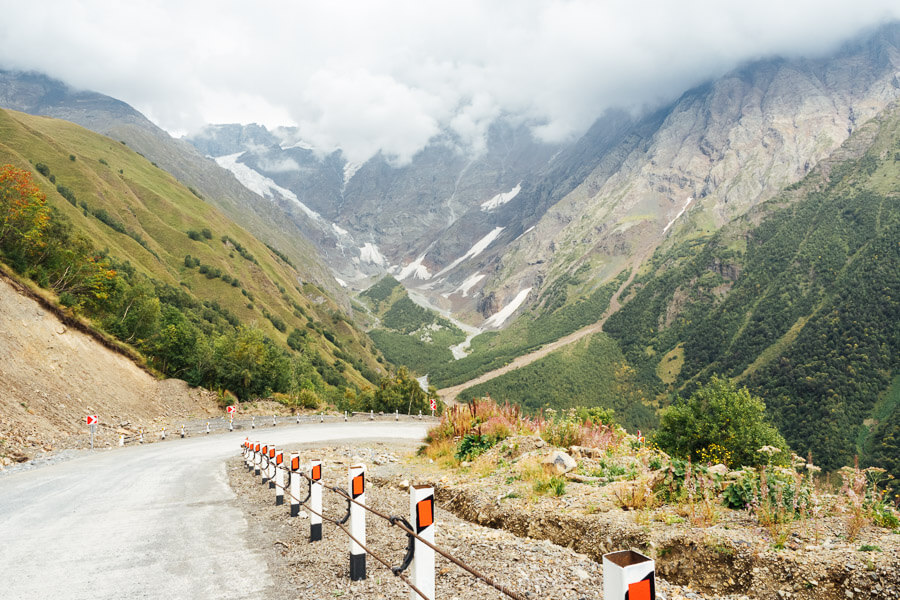
As the name suggests, Lower Svaneti is the lowland part of Western Georgia’s popular highland region. Compared to Upper Svaneti (Mestia and Ushguli) it gets little to no attention – but with the installation of the new sealed road, I think that is going to change.
Sasashi village is a 90-minute drive from Ushguli via the Zagari Pass. On a plateau above the village, the semi-abandoned Muashi Resort is a fun spot to explore. Bring an empty bottle to fill up at the mineral water spring. Hiking routes reach deeper into the mountains from here, bringing you to tiny alpine lakes and solitary stone chapels. One of the main reasons to stop in Sasashi is to stay at JorJ’Inn, a beautiful guesthouse run by three young people who decided to renovate their great-grandfather’s home.
Coming down from Sasashi, you can either continue directly to Kutaisi or take a left and continue into Racha-Lechkhumi. Be sure to stop in the town of Lentekhi for a delicious Svanetian kubdari to go.
Get there: Drive up from Kutaisi or down from Ushguli – the road is now sealed on both sides and suitable for any kind of vehicle, including sedans. The journey takes two hours from either approach, making this area an ideal place to break the journey when travelling to or from Upper Svaneti via the Zagari Pass.
Where to stay: JorJ’Inn in Sasashi is an exceptionally stylish, comfortable guesthouse with a friendly and helpful host in Tamta. Our stay here in the village was one of the only times I have truly felt completely relaxed at a guesthouse in Georgia!
Further reading: Things to do in Lentekhi and Lower Svaneti (published soon).
30. Guria Region: The Georgian Tea Route
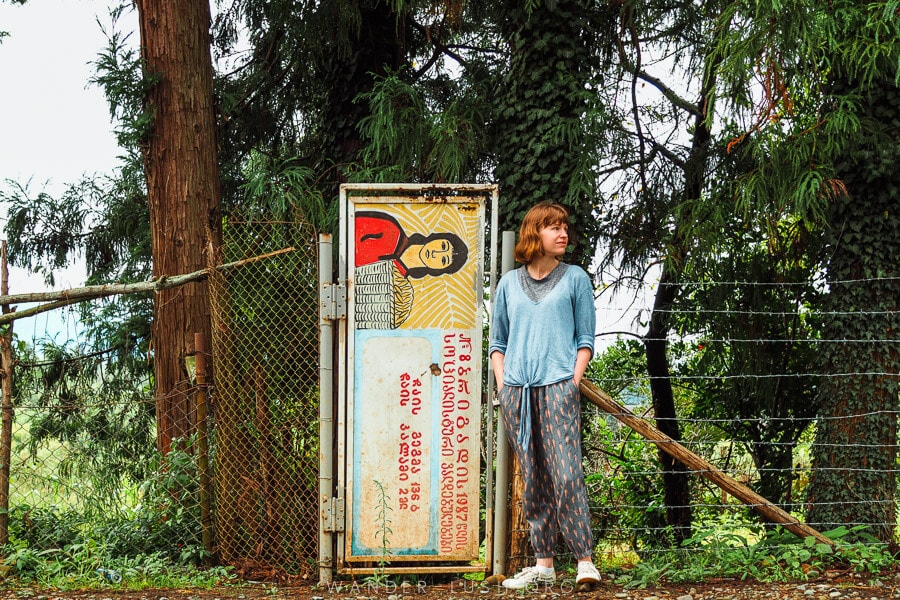
Everyone knows Georgia has a Wine Route – but did you also know there’s a Tea Route? In Soviet times, Georgia was one of the world’s biggest producers of tea. The industry was mostly wiped out in the 1990s (and the tea bushes ran wild), but its legacy lives on in Guria, where Soviet relics stand alongside a new wave of family-run tea estates.
Georgia’s smallest region by size, Guria is hilly, lush and humid, with two mountain resorts (including Bakhmaro) and a thin sliver of Black Sea coastline. The main town of Ozurgeti is a good base for exploring the old tea fields in Anaseuli. Komli and Teni Tea are two farms where you can learn about Georgia’s tea heritage and pick/roast your own leaves. Keep an eye out for the skeletons of disused tea factories as you venture into the upper villages such as Shroma to admire the restored Soviet-era Culture House and several impressive mosaics.
Get there: It is almost mandatory to bring a car to Guria if you want to get the most out of your trip. If you are content with basing yourself in Ozurgeti for a couple of nights and using local taxis to get around, that is also an option. Trains from Tbilisi to Ozurgeti take a full nine hours, so the smart choice is to transit through Kutaisi where regular marshrutka vans are available (2.5 hours travel time).
Where to stay: We always stay at Menabde Winery outside Ozurgeti. I love their cosy rooms, and the homecooked breakfast is great.
Further reading: My full guide to Ozurgeti and Guria.
31. Dedoplistskaro: Kakheti’s wild side
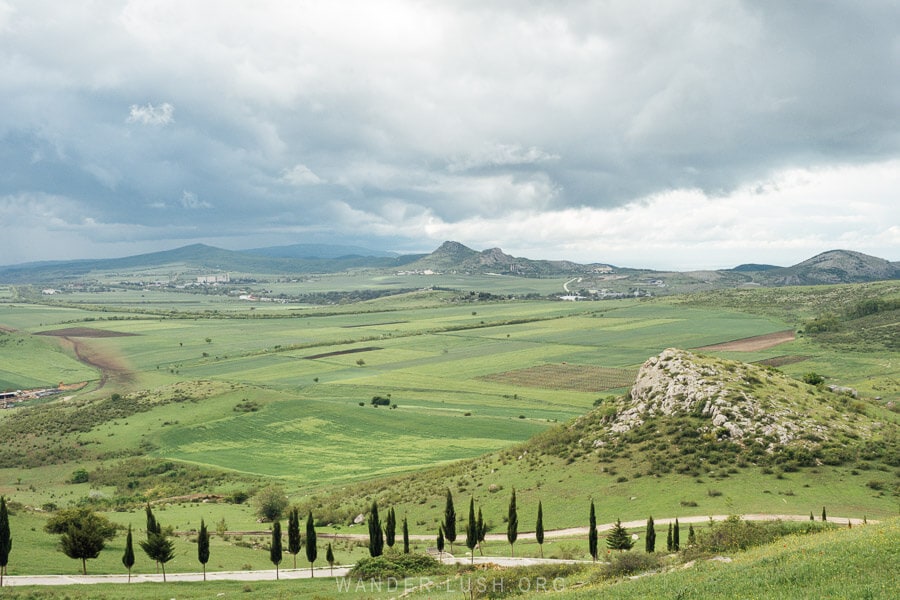
Located in the southeastern historic Kiziki Region, Dedoplistskaro is the gateway to the Vashlovani Protected Areas and Big Shiraki airfield. If you’re all wine-d and monastery-d out and looking for something offbeat to do in Kakheti, a few days here will satisfy any cravings you have for resplendent landscapes, wild nature and solitude.
On the outskirts of Dedoplistskaro, Eagle Gorge Natural Monument is a 1.7-kilometre river canyon carved from limestone with walking trails where you can observe some of the 60 species of birds that nest and feed here. Khornabuji Castle AKA the Fortress of Tamar is an impressive stone ruin set on a limestone massif, and the 6th-century St. Elia’s Church can be submitted for a view of the plains.
Back in town, Pesvebi was founded by entrepreneur Nino Bakhutashvili to preserve Kizikian carpet-weaving traditions by reviving ancestral designs and plant-dyeing techniques. Her art studio in Dedoplistskaro is open to visitors – and shoppers! The Dedoplistskharo WWII memorial was built in 1985 and depicts a woman flanked by two giant concrete lions. Other Soviet-era monuments can be found scattered throughout the town.
Get there: Marshrutka vans to Dedoplistskaro are available from Telavi, Sighnaghi and Tsnori. To get there directly from Tbilisi (a 2-hour drive via the Kakheti Highway), the best option is a private or shared taxi from Isani Metro Station.
Where to stay: Guest House Savanna is my top choice, with comfortable cabins and cottages, home-cooked meals, and a terrific resource in host Temo, who is a professional wildlife photographer and fountain of knowledge on the area.
Further reading: Things to do in Dedoplistskaro.
32. Big Shiraki: An abandoned Soviet military airbase
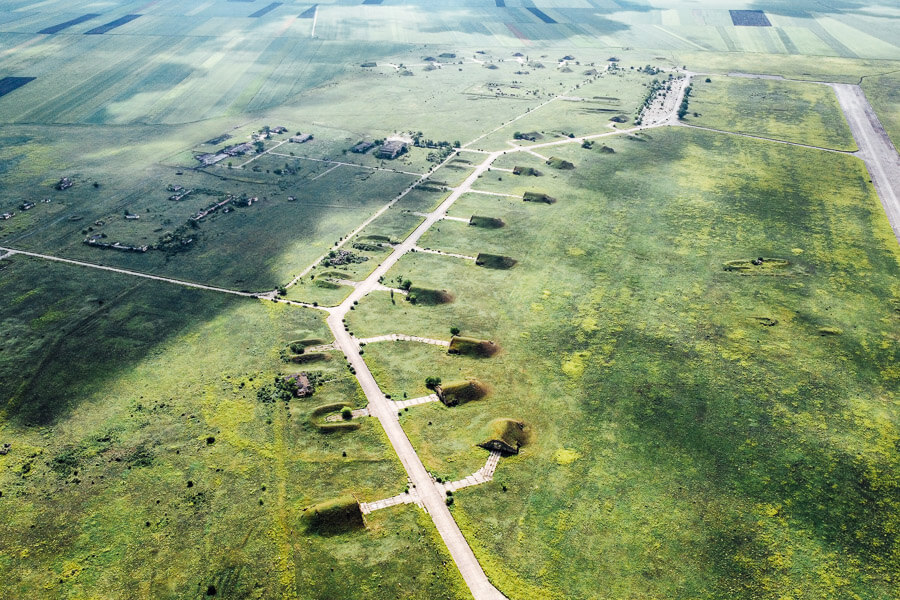
A playground for photographers (especially drone pilots!), Shiraki is not one to miss if you’re interested in abandoned places in Georgia. Built in 1950, this former military airfield in far south-eastern Kakheti was a home base for the 178th Guards Fighter Aviation Regiment, who flew out from Shiraki to Afghanistan during the Soviet–Afghan War
Big Shiraki’s labyrinth of concrete airstrips, airplane hangars, barracks and ancillary buildings were abandoned long ago, now used only by local farmers to graze cattle and store feed and grain. A single bomber plane whose engine wouldn’t start during the evacuation was left behind and is now hiding in the tall grass. The most interesting part of Shiraki is the 50-odd aircraft hangars, all dome-shaped with turf roofs and heavy metal doors. Each one is numbered and has a unique patina of rust. Some are even inscribed with old Russian writing, apparently messages dedicated to Lenin. Below ground, locals say there is probably a system of bunkers lurking out of sight.
Get there: The entrance to the airfield is located 40 km from the town of Dedoplistskaro. The roads are in poor condition, so a 4WD is recommended. It is not advisable to visit the area after heavy rain.
Further reading: My full guide to visiting Big Shiraki.
33. Zestafoni: Industrial history & mosaics in the Georgian Rust Belt
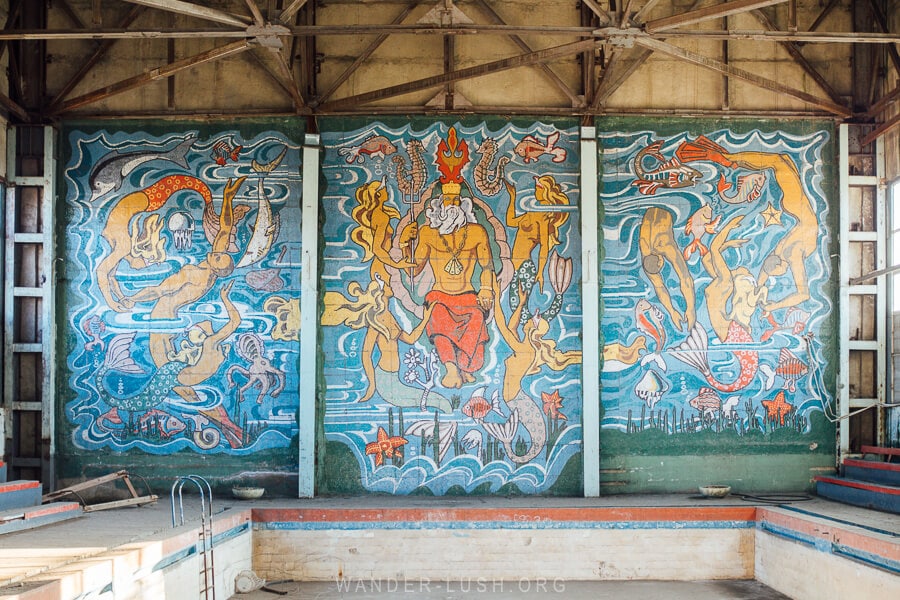
Located just outside Kutaisi, industrial Zestafoni is a bit of a hidden gem in Georgia. The entire city revolves around the Ferroalloy Plant, a massive factory built to process raw material from the mines in Chiatura, Tkibuli and elsewhere. The plant started operating in 1933 and has been working 24/7 ever since. A few years back I got to tour the factory and let me tell you, it’s a blast from the past.
Beyond the factory, Zestafoni is home to some of Georgia’s finest Soviet-era mosaics. Most are the work of one man, artist Demur Basheleishvili. You can find incredible pannos scattered around downtown amongst bas-reliefs, Socialist-style statues and memorials. The piece de resistance is the so-called Swimming Pool Mosaic, which has recently been restored by the Ribirabo Foundation as part of the new Path of Mosaics tourism initiative. Created in the early 1980s by Nugzar Medzmariashvili and Demur Basheleishvili, it is quite simply the most stunning mosaic in Georgia.
Spend an afternoon walking around Zestafoni to discover a former Pioneer’s Palace and the small local museum. The cherry on top for photographers is the massive undercover bazaar, built in 2015. The natural light is incredible, and you can climb onto the mezzanine for views of the market floor.
Get there: Zestafoni is an easy detour off the highway between Tbilisi and Kutaisi. Marshrutka vans and taxis depart throughout the day from Kutaisi Central Bus Station, taking less than an hour to reach Zestafoni. A Bolt taxi should cost around 40 GEL. If you are coming from the east, note that the new highway bypasses Zestafoni and vans no longer call into the town, so you will have to make a special request to get dropped off.
Where to stay: Guest House Zedafoni offers five rooms and a home-cooked breakfast.
Further reading: 10 things to do in Zestafoni.
34. The ‘Monument Route’: Mosaics & memorials on the drive from Kutaisi to Zugdidi
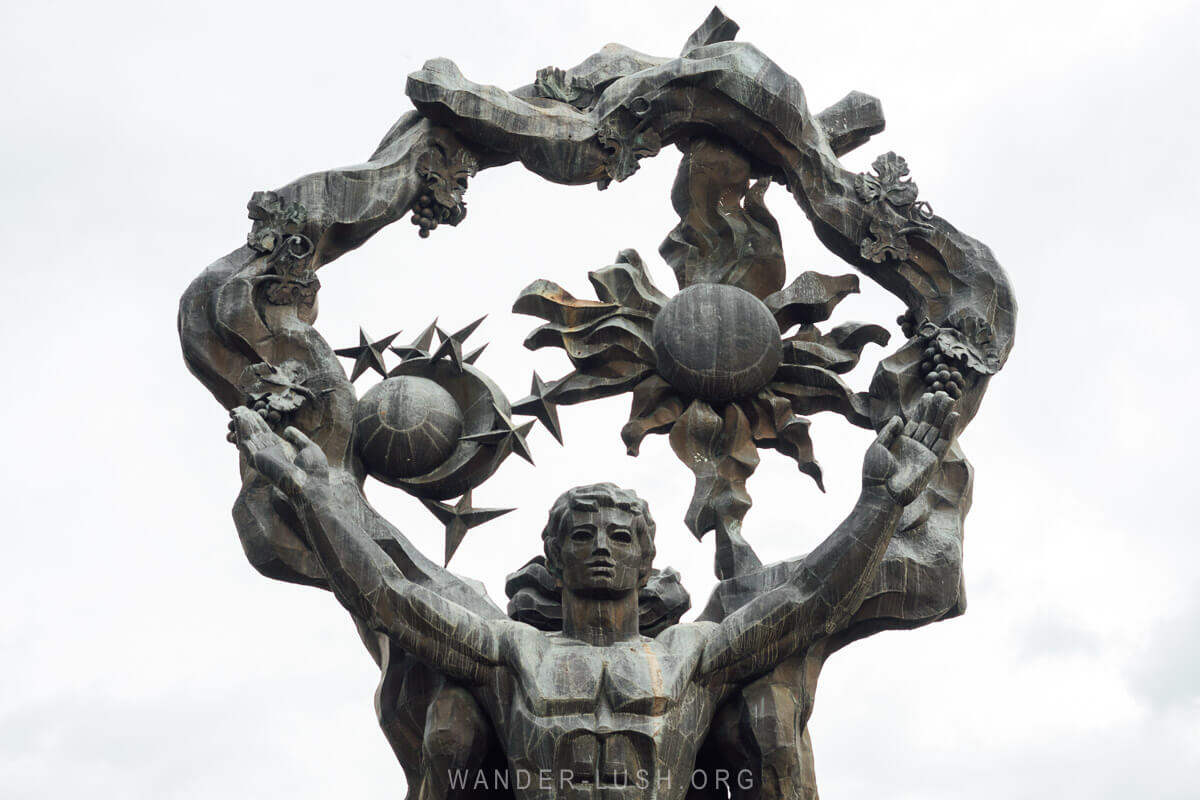
Another one for the urbexers: The ‘Monument Route’ is something I coined to describe the journey by road from Kutaisi to Zugdidi. This corner of Imereti and Samegrelo Regions – valued for its agriculture, silk production and tea fields in the Soviet period – is particularly ripe with crumbling buildings and fading relics.
As well as monuments, there are memorials, mosaics, abandoned sanatoriums, former collective farms and abandoned Culture Houses, plus palaces, synagogues and a monastery or two. Start with the House of Culture in Marani, a very rare example of a Soviet-period building that has been meticulously restored. Pulling into Abasha and Khobi, you can’t miss the monumental sculptures and large-scale pannos that decorate the town centres. Mosaic-clad bus stops dot the road around Dziguri, Ingiri and Kakhati.
Get there: To make the most of this drive, I highly recommend hiring your own car via Local Rent. The main roads in this part of the country are sealed and in good condition. Alternatively, you can arrange this trip with a driver using GoTrip – just be prepared for some funny looks from your driver when you request some of these unconventional stops!
Further reading: My complete guide to driving the Monument Route (published soon).
35. Menji: Abandoned sanatoriums in Samegrelo
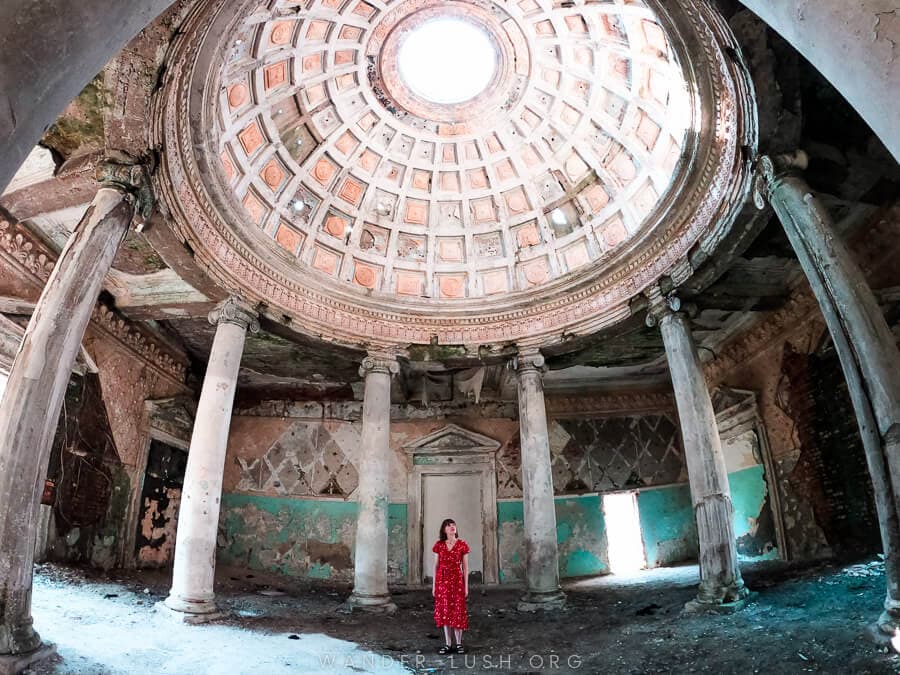
Located in Samegrelo Region on the Monument Route, Menji is a much smaller and lesser-known former health retreat. Unlike Tskaltubo, Menji is completely abandoned.
There are at least two sanatoriums in Menji that now lay in almost complete ruin. The most impressive is the Roman-style building adjacent to the railway tracks. It features a huge atrium with a domed ceiling and ornate plasterwork, much of which has somehow stood the test of time. There’s enough detail left in Menji that you can really picture what it was like in its heyday, when people descended on the mineral water resort for their summer holidays. Rows of small private bathrooms, each with an original ceramic tub – but all with a huge chunk missing – open up off two parallel hallways. Geometric and floral tiles are still stuck to some of the walls, and beneath a thick layer of dirt, you can just make out a stunning mosaic floor that appears to be completely intact.
Get there: Menji is a five-minute drive from the town of Senaki (a stop on the Monument Route, mentioned above). If you are wanting to visit without a car, regular minivans depart from Kutaisi Central Bus Station and take 1.5 hours. Once in Senaki, find a local taxi to take you the rest of the way.
36. Abastumani: Dachas & a mountain observatory
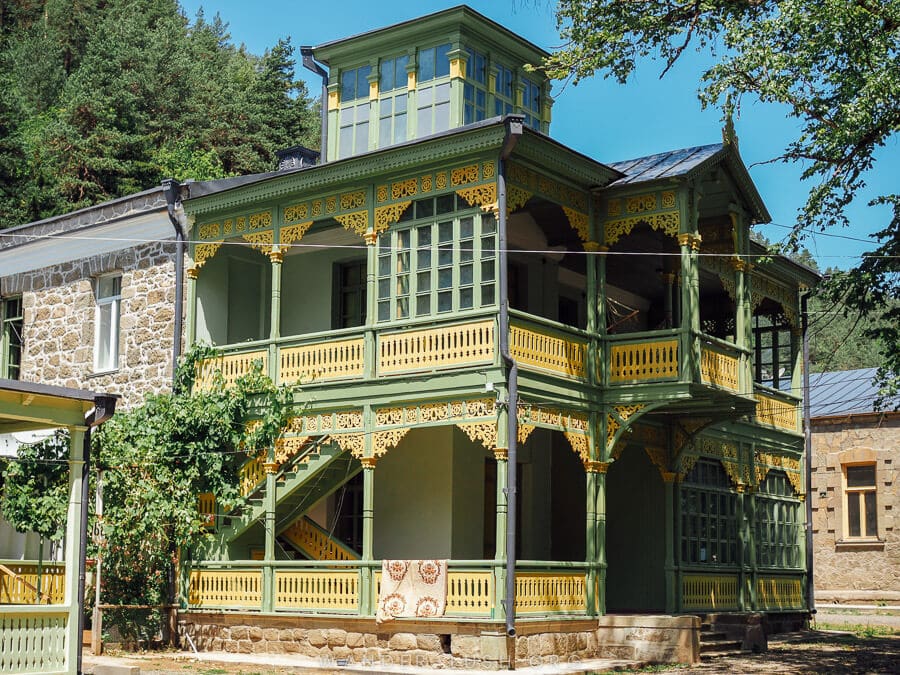
Yet another mineral water resort, Abastumani’s modern history goes back to the days of the Tsar: In the years before the revolution, Grand Duke George Alexandrovich Romanov – the younger brother of the last emperor, Nicholas II – was sent to live here after being diagnosed with TB. Members of the Russian elite diligently followed their prince and built beautiful summer houses along the main street, taking full advantage of the clean air and healing thermal waters.
Many of Abastumani’s handsome houses have been restored and repainted as part of a project to breathe new life into the old resort. The old Romanov Palaces (where George lived) and the Tsar’s Bathhouse are now receiving the same TLC. In the meantime, a single public sulfur bath house is still functioning today. Soon, a Rooms Hotel will open inside one of the old sanatoriums.
Abastumani’s crowning glory is the Astrophysical Observatory on Mount Kanobili. Built in 1932, this was the first mountain observatory in the USSR. Using telescopes to cast their eyes towards the clear skies above Abastumani, scientists made a number of important discoveries here before the observatory was shuttered. Drive or take the Soviet-era cable car up to the observatory for a guided tour.
Get there: Abastumani can be reached in around 45 minutes via a paved road from Akhaltsikhe (marshrutka vans available). There is also a mountain road from Kutaisi (via Sairme and the Zekari Pass), but it is only open during summer and requires a car with high clearance. Work on both roads in ongoing and should be completed by summer 2025.
Where to stay: Eikon Apartments is a new development with tidy rooms and self-contained suites.
Further reading: 12 things to do in Abastumani.
37. Tianeti: Mouldy cheese & autumn colours
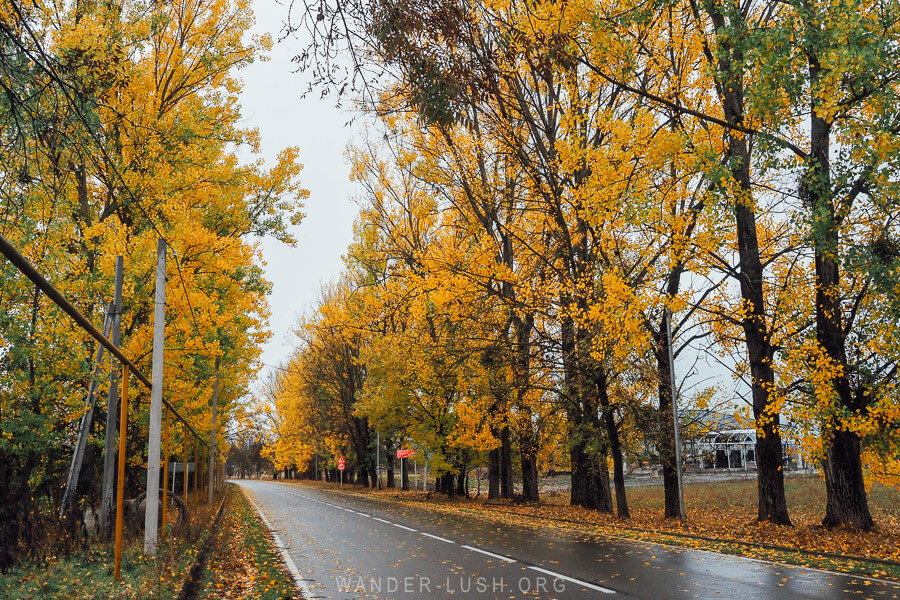
Tianeti is a small town in Eastern Georgia, located between Pankisi Valley and Zhinvali Reservoir on a backroad that connects Kakheti Wine Region with the Georgian Military Highway and Kazbegi. I highly recommend using this sealed, scenic route to travel between the two regions instead of doubling back through Tbilisi.
I don’t necessarily recommend overnighting in Tianeti (I have before, and it was challenging to find good accommodation), but I definitely recommend driving through. The best time to visit is during autumn, when the tall trees that line the road through town are ablaze with incredible colours. Stop at the very informal Super Khinkali – a restaurant above a hardware shop – to gorge on a platter of hand-pinched dumplings or a plate of dambalkhacho, a mouldy cottage cheese that is a Tianeti specialty.
Just off the road before Tianeti, Kvetera Fortress’s Church is a beautiful chapel with turquoise roof tiles.
Get there: Since the main attraction here is the drive itself, I recommend visiting Tianeti with your own car. The road are in good condition and fairly quiet in my experience. This route through Tianeti is a convenient ‘shortcut’ for travelling between Kakheti Wine Region and Kazbegi, linking up with the Military Highway before Ananuri Fortress. This route is available on GoTrip.
Where to stay: Accommodation options in Tianeti are limited (when we last overnighted there, we found prices were ludicrously high), so I recommend staying in Pankisi Valley (see below) or continuing your drive to Kakheti/Kazbegi, depending on your direction of travel.
Further reading: How to travel from Kakheti to Kazbegi via Tianeti (published soon).
38. Pankisi Valley: A unique cultural experience in Georgia
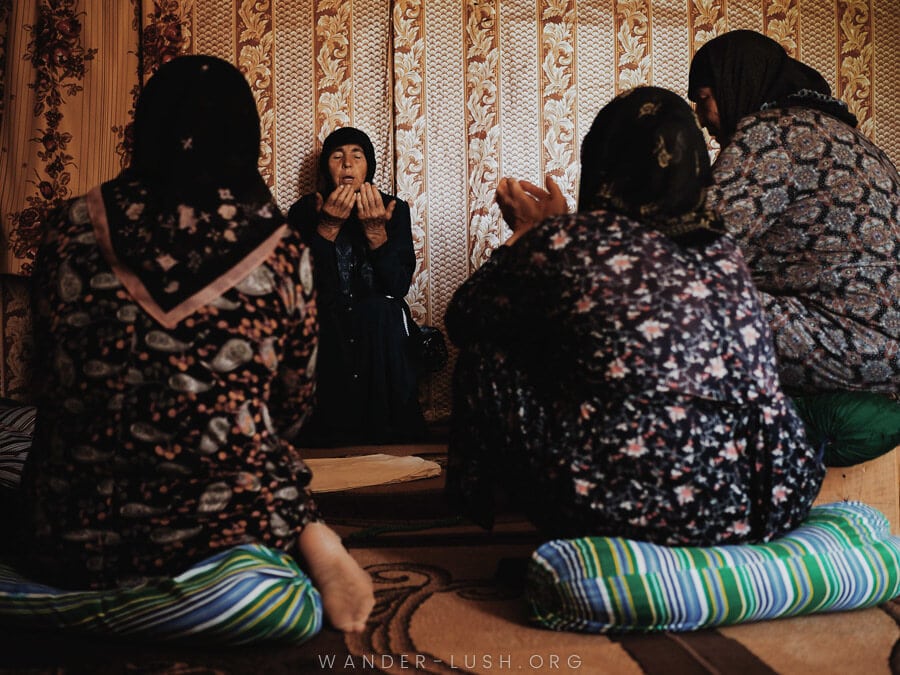
Located in the foothills of the Greater Caucasus beneath Tusheti, Pankisi Valley is a place that is very special to me (I have spent a lot of time here over the years, and I consider Nazy – the woman who has spearheaded responsible tourism in the community – a friend). The families who live here are Kists, an ethnic group whose ancestors emigrated to Georgia from Chechnya 200 years ago. The opportunity to learn about Kist language, traditions and cuisine makes this one of the most interesting parts of Georgia to visit.
Woman-run homestays accommodate guests. Guided cultural walks of the village can all be organised through your homestay, and include a visit to the mosque, observing traditional handicrafts including felting, touring the small folklore museum, and trying non-alcoholic Kist beer. Try to visit on a Friday so you can sit in on the women’s zikr, a fascinating Sufi ritual that takes place once a week in the Old Mosque in Duisi.
Get there: Pankisi is located an hour’s drive north of Telavi. Regular marshrutka vans and taxis are available from Telavi, and there are several direct departures from Tbilisi every day. Some vans transit through Akhmeta, the nearest city to Pankisi.
Where to stay: Nazy’s Guest House, one of my favourite accommodations in Georgia, offers comfortable rooms and space for camping. Home-cooked meals are provided, and Nazy can help with organising tours, transport and anything else you need.
Further reading: 21 memorable things to do in Pankisi.
39. Asureti: A former German colony
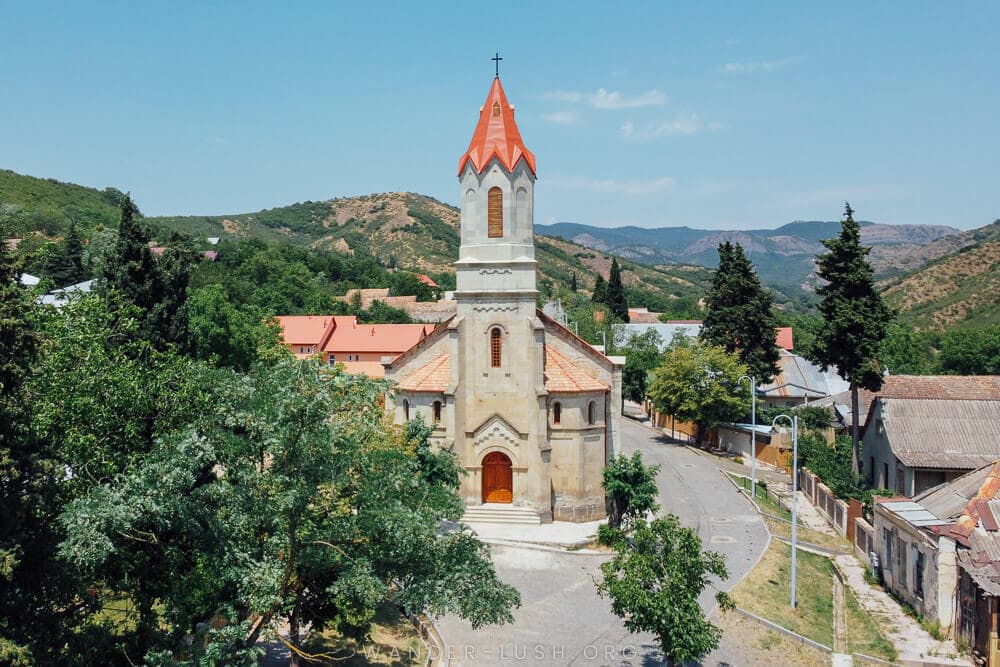
Asureti, formerly known as Elisabethtal, is a former German colony in southern Georgia’s Kvemo Kartli Region. One of three such villages in the area, it is a living reminder of Georgia’s little-documented Swabian German community who settled here in the early 1800s. Some 72 families lived in Asureti until they were forced out of Georgia during WWII.
Asureti is a tiny town but absolutely delightful for a stroll. The main landmark is the Lutheran church, built in 1871 and restored in 2020, which sits proudly at the top of the main street. Dual-language street signs in Georgian and German adorn every front fence. Beyond, you can spot original Fachwerk half-timbered houses with tidy gardens and deep cellars beneath their foundations. Be sure to stop for lunch at Bahnhof Station, a German-style beer hall set inside one of the town’s historic buildings. Trialeti (Alexandershilf) and Bolnisi (Katharinefeld) are two more German villages you can visit in the area.
Get there: Asureti is a 45-minute drive from Tbilisi. While minivans are available from Navtlugi Station, for flexibility it is best to visit this part of Georgia with your own car. Customise a private transfer with GoTrip to include other nearby attractions such as Birtvisi Canyon or Samshvilde.
Where to stay: Asureti has several simple guesthouses, including Nia.
Further reading: My full guide to Kvemo Kartli region.
40. Gorelovka: A colourful Doukhobor village
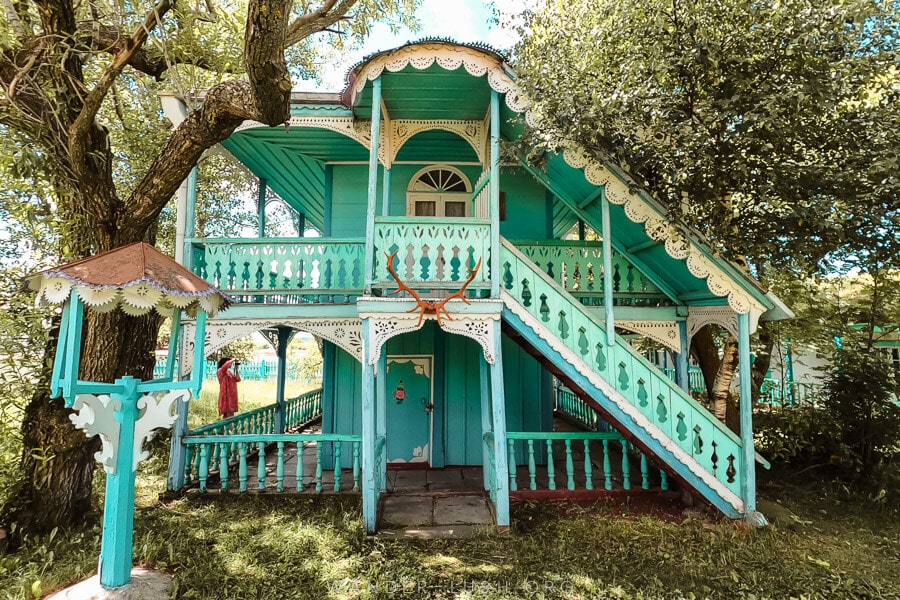
Located in Samtskhe-Javakheti Region, Gorelovka is a tiny village of just a few dozen families. What makes this place special and a unique destination in Georgia is the distinctive blue-and-white vernacular architecture – and more so, the story behind it.
Gorelovka was settled in the early 19th century by families from the Doukhobor community, a spiritual sect that fled persecution in Russia. I have been lucky enough to meet with several community members and be a guest at several homes in Gorelovka over the years, an experience that taught me a lot about the Doukhobor’s unique beliefs around Pacifism, the Sacrament and marriage.
The ‘Blue House’ is a two-story wooden house with intricate fretwork and hand-painted floral emblems finished in a shade of bright turquoise. It was built as an orphanage for the many children who arrived in Georgia without their parents after the arduous journey south. Visitors are welcome to look around the private complex, which also contains a Prayer House and a Community Hall, provided there is someone present to open the gates.
Get there: Gorelovka is located 3 hours’ drive west of Tbilisi, close to the border with Armenia. Public transport is limited, so it’s best to go with your own vehicle, ideally when visiting the Javakheti Protected Areas. It is also possible to visit from Borjomi or Akhaltsikhe.
Where to stay: The closest guesthouses are located in Ninotsminda. I highly recommend Guest House Sonya.
More beautiful places in Georgia for hiking, off-roading & outdoor adventures
Last but certainly not least, these diverse destinations all capture the extreme beauty of Georgia’s natural landscapes – from the highest mountains to the country’s lowest point.
41. Upper Adjara: Alpine villages, wooden mosques & glamping resorts
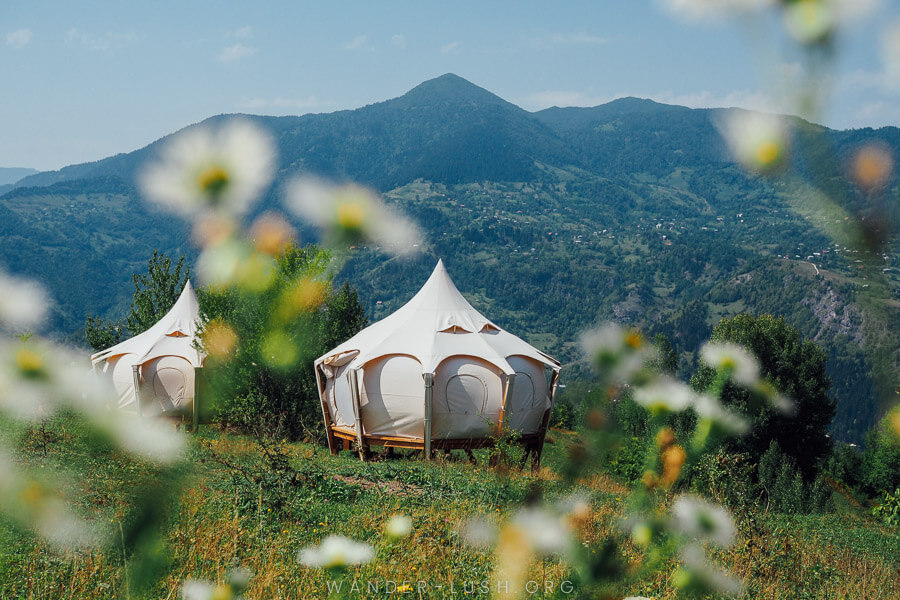
Upper Adjara or Mountainous Adjara is located in the Lesser Caucasus range. A completely different world from Batumi and the rest of the Black Sea Coast, some families here follow a semi-nomadic way of life – something that is beautifully captured in Natela Grigalashvili’s documentary photography. The area sees relatively few visitors, but adventure tourism is on the rise, with mountain biking trails being mapped and Europe’s longest zipline poised to open in the coming years.
Driving the sole road through Adjara, it’s one peaceful mountain town with painted cabins set amongst rolling hills after another. Adjara was part of the Ottoman Empire for two centuries until 1878 and many families follow Sunni Islam traditions, thus Upper Adjara is known for its elaborately painted wooden mosques, many of which survived the Soviet period by being transformed into museums.
Keda is the main centre of Upper Adjara and has good infrastructure for visitors. Smaller towns, particularly Shuakhevi, are now developing community based tourism and offer homestay experiences. The quiet village of Khulo is my favourite place in Upper Adjara. This is where you board the single-span cable car to travel to Tago village and the wonderful Glamping Tago.
Get there: Minivans depart from Batumi for Khulo every 60 minutes throughout the day, stopping at smaller villages along the way. New city buses also run on this route twice daily. In summer it is possible to access Khulo from the east (approaching from Akhaltsikhe), although a small section of the road remains unpaved.
Where to stay: Khulo is a convenient base in Upper Adjara, with a number of guesthouses and several small restaurants. I recently stayed at Hotel Khulo Inn, a new family-run hotel with great rooms and spectacular views. Glamping Tago, a mountain retreat in a small village at the opposite end of the Khulo Cable Car, is one of the most memorable accommodations in the country.
42. Tusheti: Georgia’s most remote mountain destination
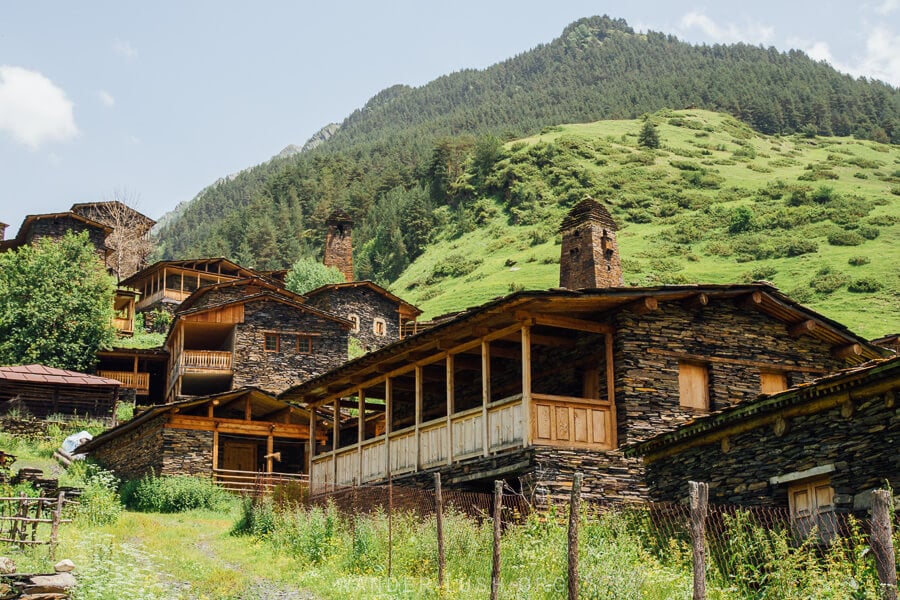
Tusheti is without a doubt Georgia’s most remote and daring mountain destination. It takes time, patience and foresight to plan a trip to Tusheti – and you need to steel yourself for the drive to Tusheti from Tbilisi via the Abano Pass, which is certainly not for the faint of heart. For those who dare to venture into the peaks of the Greater Caucasus to Europe’s highest permanently inhabited village, the reward is worth the effort.
Tusheti is primarily for multiday hikes and horseback riding. Marked trails take you well and truly off the grid into some of Georgia’s most isolated settlements and mountain passes. Beyond the outdoor pursuits, Tusheti is a fascinating cultural landscape, with unique religious and social traditions to learn about, stone defensive towers to admire, and regional food and drink (including Georgia’s answer to cheese fondue!) to enjoy. Don’t miss visiting Dartlo, the most picturesque village in the region.The road to Tusheti is open during the summer months (approximately from mid June until late September) and should only ever be tackled with a very experienced driver. Get in touch if you need a recommendation.
Get there: Omalo, Tusheti’s main village, is a 7-8 hour drive from Tbilisi. There is no public transport to Tusheti – the only way to travel the Abano Pass is by Delica or 4WD/Jeep taxi. Shared taxis are available from Alvani and Telavi in the lowlands. See my Tusheti Transport Guide for full details.
Where to stay: There are seasonal guesthouses scattered throughout Tusheti. Dartlo, my favourite village, is a great place to base yourself as there are plenty of accommodation choices, food options, and access points for hiking trails. Located in Old Dartlo, Guest House Samtsikhe offers simple, cosy rooms with balconies and incredible views. Horse riding is available, and there’s a cafe onsite.
Further reading: 22 essential Tusheti travel tips.
43. Vashlovani Protected Areas: The Georgian Badlands
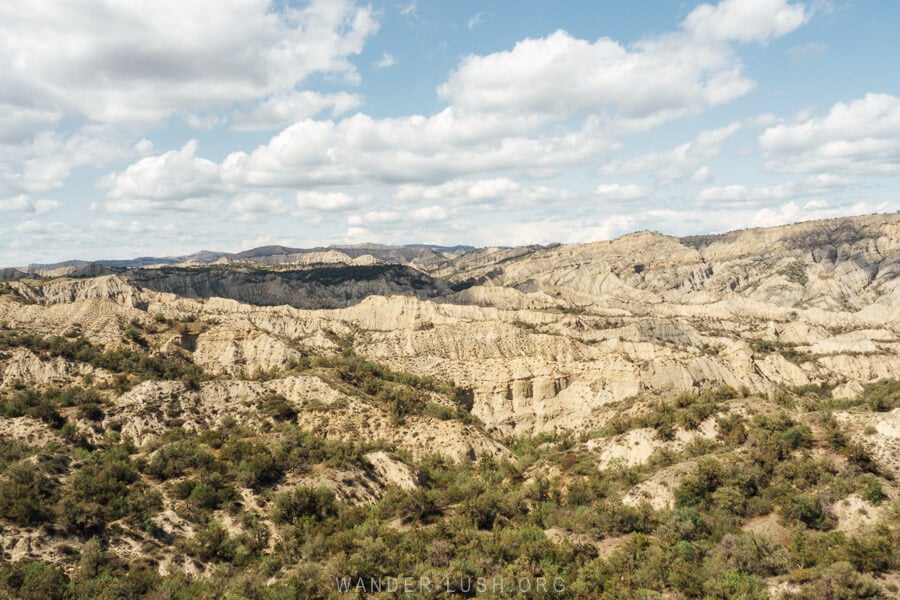
Up there with the most adventurous destinations in Georgia, the Vashlovani Protected Areas (AKA Vashlovani National Park) is a surreal landscape of canyons, steppe, savanna and mud volcanoes in the far south-eastern part of the country, close to the border with Azerbaijan.
Designated a UNESCO Biosphere Reserve back in 2022, Vashlovani is not a hiking destination, but rather it is a place for off-roading. A robust 4×4 and experience with difficult terrain is mandatory if you want to tackle the park on your own. Otherwise, I recommend hiring a local driver-guide.
With just one day in Vashlovani you can see a decent chunk of the 35,200-hectare park. A logical loop route starts at Pantishara Canyon and the dry sea beds, continues to Samukhi Valley where you can spot gazelles, through to the magnificent Usakhelo Viewpoint before finishing at Mijniskure and the easternmost point of Georgia, where the snake-like Alazani River forms the border.
Get there: Vashlovani is located around 170 km from Tbilisi and 75 km from Sighnaghi. You need your own off-road vehicle to visit the park, thus the easiest option is to hire a driver-guide.
Where to stay: Dedoplistskaro is the obvious base for day trips into Vashlovani and a mandatory port of call for obtaining pre-authorisation to enter the park. Guest House Savanna offers excellent rooms and self-contained cottages/cabins, plus full board. Get in touch with Temo and he might be able to coordinate a driver for you.
Further reading: My easy one-day itinerary for Vashlovani.
44. Didgori Valley: One of Georgia’s most scenic drives
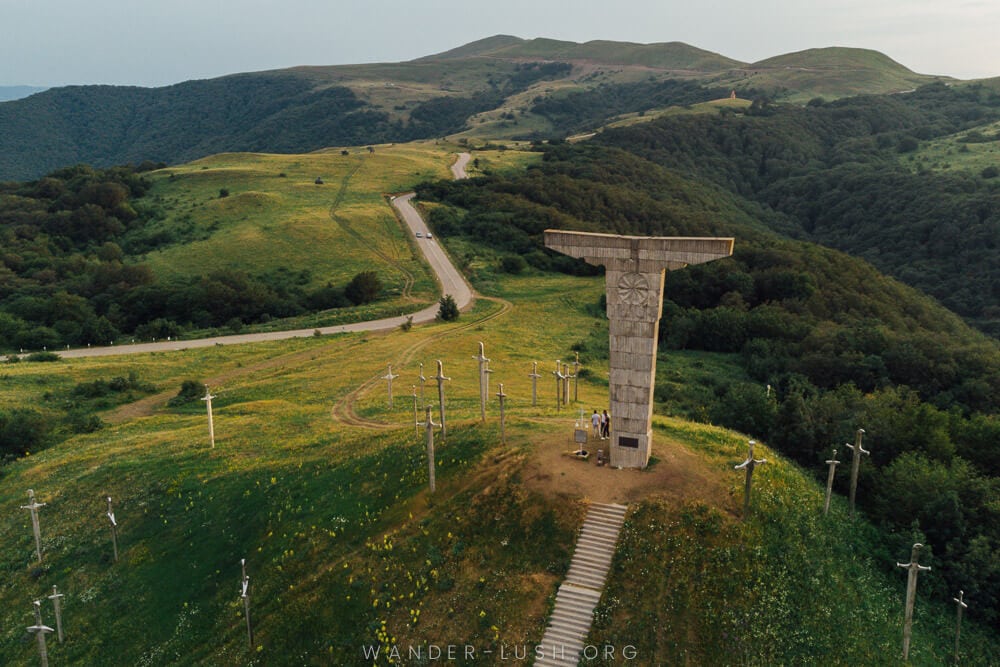
The Didgori Battle Memorial is a war memorial set across a series of rolling hills in Kvemo Kartli Region west of Tbilisi. It marks the location of the Battle of Didgori, when on August 12, 1121, King David the Builder led his army to ambush Seljuk forces. His ‘Miraculous Victory’ as it’s known led to Georgia’s liberation and reunification, ushering in the country’s Golden Age.
If I was to describe Didgori in a word, it would be powerful. The complex has several components, but the main part is a huge stone sculpture emblazoned with a lion and surrounded by hulking crucifix-shaped metal swords plunged into the hillside to represent the lives lost in the battle. In the surrounding wildflower meadows you can find sculptures of disfigured warriors, and a larger-than-life King David raising his longhorn.
Try to time your visit for sunset for the most atmospheric light. Every year on August 12, one of Georgia’s biggest festivals, Didgoroba, is held here as a tribute to the battle that freed Georgia from the yoke of Turko-Persian control.
Get there: You need your own car (or a car and driver) to reach Didgori. The road through the valley is brand new and a real pleasure to drive. There are two possible routes from Tbilisi: Via Mtskheta or via Manglisi. Both take approximately 1.5 hours. Round-trip transfers can be organised through GoTrip.
Where to stay: Hotel LUKA in Manglisi offers simple but comfortable rooms and a home-cooked breakfast. The location 30 minutes from the monument makes this an ideal place to sleep after driving up for sunset.
Further reading: My tips for visiting the Didgori Battle Memorial.
45. Rkoni Valley: Hiking trails near Tbilisi
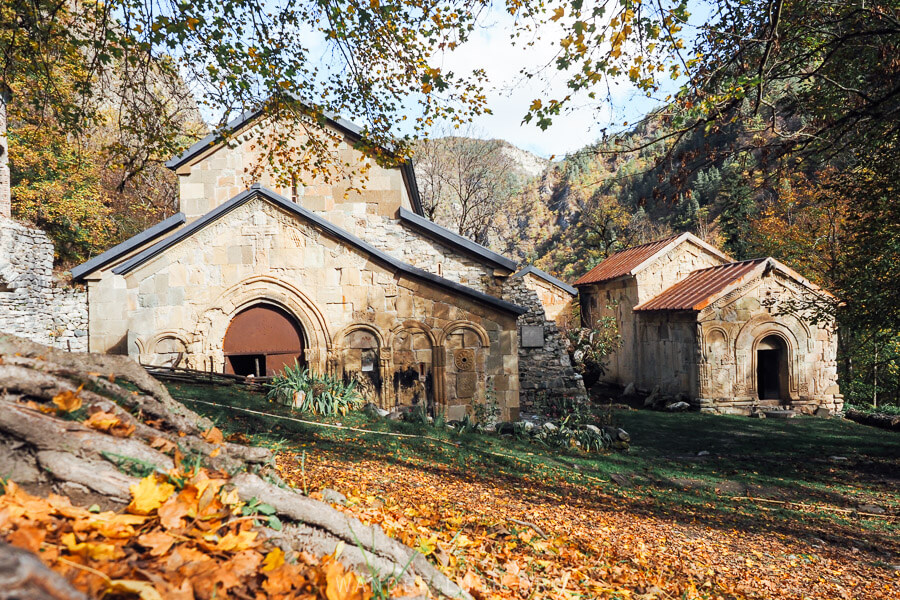
Located west of Tbilisi in Shida Kartli Region, Rkoni is a peaceful river valley sprinkled with tiny churches and picturesque villages. It is one of the best places to go hiking near Tbilisi, especially in the months of October and November when the autumn colours are out in full force.
An easy trail carries you from the end of the road to Rkoni Monastery, a complex of religious buildings that was ransacked in the year 1400 by Tamerlane’s armies and later rebuilt. Adjacent to the monastery, a fine example of a stone Tamar Bridge arcs elegantly over the Tedzami River. The lesser-known Ikvi Church, a beautiful stone chapel with vivid frescoes, can be reached by walking up the mountainside from the village centre.
Get there: With limited public transport connections, it is recommended to book a transfer to Rkoni through GoTrip if you are planning a day trip (possible in summer/autumn, as Rkoni is only 1.5 hours’ drive west of Tbilisi). If you have more time, base yourself in Kaspi, Akhalkalaki or even Gori and use a local taxis to get to and from the trailhead. The road into Rkoni is unsealed, so a car with high undercarriage clearance is a prerequisite.
Where to stay: One of my favourite hotels in Georgia, the wonderful Chateau Mephis Kalaki is a 45-minute drive from Rkoni village.
Further reading: How to plan a day trip to Rkoni Valley from Tbilisi (published soon).
46. Sabaduri Forest: Georgia’s winter wonderland
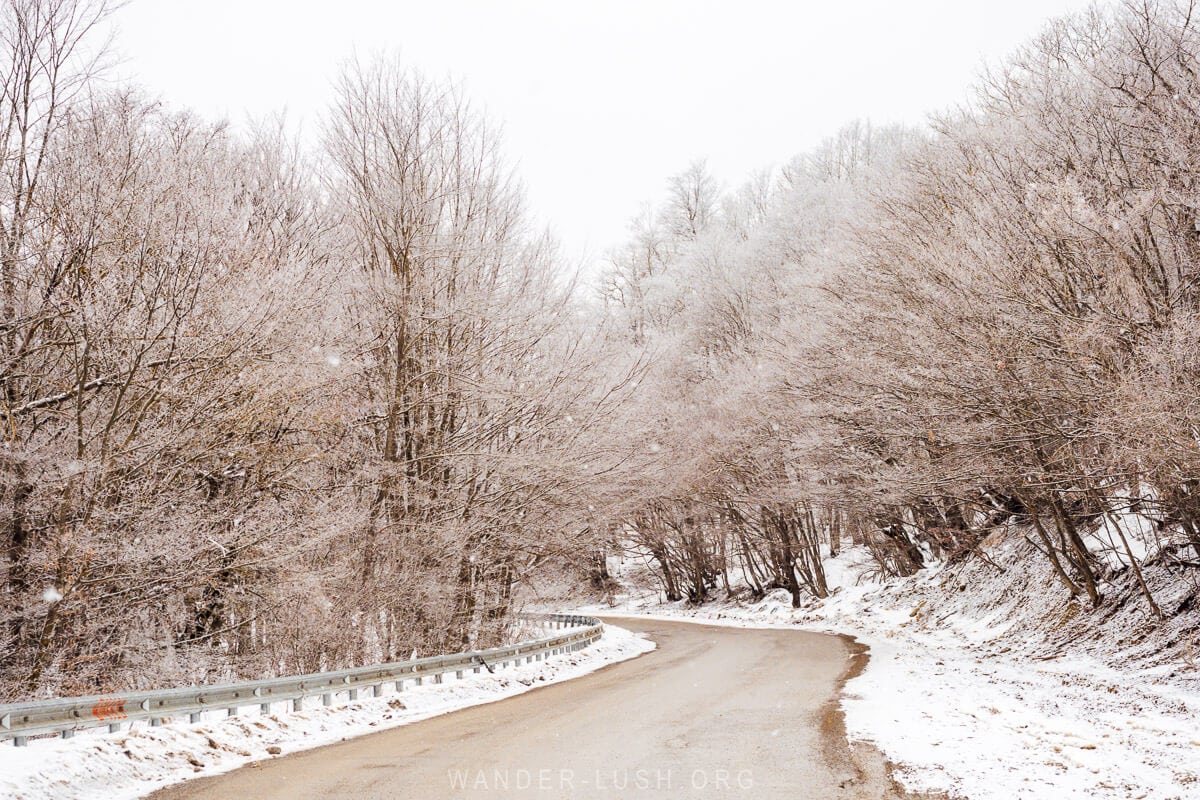
Just an hour from Tbilisi by road, Sabaduri Forest is a pretty pocket of wilderness on the edge of Georgia’s oldest national park, Tbilisi National Park, established in 1973. It is not so much a destination for hiking, but rather a spot for two much-loved Georgian activities: picnics and photoshoots.
The oak, beech and hornbeam trees take on brilliant shades of rust and red in autumn. In January and February, the leafless branches collect the falling snow and Sabaduri transforms into a fairytale winter landscape. If you are headed to Kazbegi or Gudauri, you can easily add Sabaduri onto your Georgian Military Highway itinerary before Ananuri Fortress. There is little to no infrastructure in the area aside from a cafe, so I recommend packing a picnic lunch if you are headed this way for a day’s drive. Bring some apples and carrots to feed to the 20 rescued brown bears homed at the nonprofit Zoological Centre (AKA Bear Sanctuary) nearby in Tskhvarichamia.
47. Khvamli Massif: The Best day hike near Kutaisi
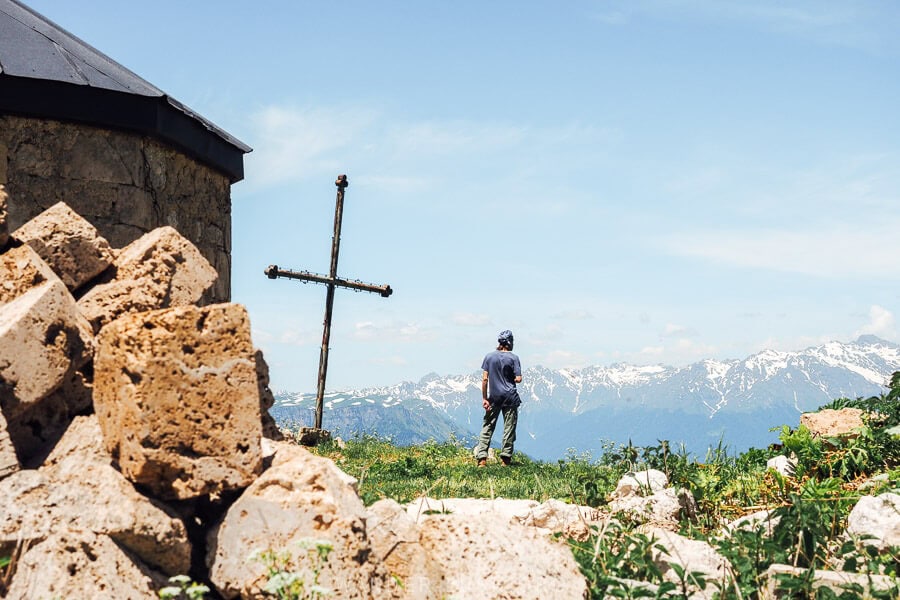
Khvamli Mountain’s unmistakable jagged profile can be spotted on the horizon from anywhere in Kutaisi. The massif is connected to Greek mythology – if legends are to be believed, this is the place where Prometheus was shackled by Zeus as a penance for introducing humanity to fire.
Located at the entrance to Lechkhumi Region, Khvamli is one of the most prominent peaks in Western Georgia, which means you get incredible views of both the Greater Caucasus to the north, and the Lesser Caucasus to the south, plus dozens of other peaks in Imereti and Racha as you ascend. The highest point on the mountain, known as ‘The Lighthouse’, is reached via a 2-kilometre marked hiking trail that starts from a parking lot on the mountainside, two hours’ drive due north of Kutaisi. The hike can be done in a couple of hours, making this an excellent nature-themed side trip from the city.
Get there: If you don’t mind extending this into a 14 km uphill hike, marshrutka vans travelling to Tsageri can drop you off on the highway at Tskhakuri Bridge. Otherwise you will need a private car to reach the parking area via a newly sealed road. Expect to pay around 80 GEL one-way for a taxi.
Further reading: My detailed guide to hiking Khvamli Mountain.
48. Tskhrajvari: The Hill of Nine Crosses
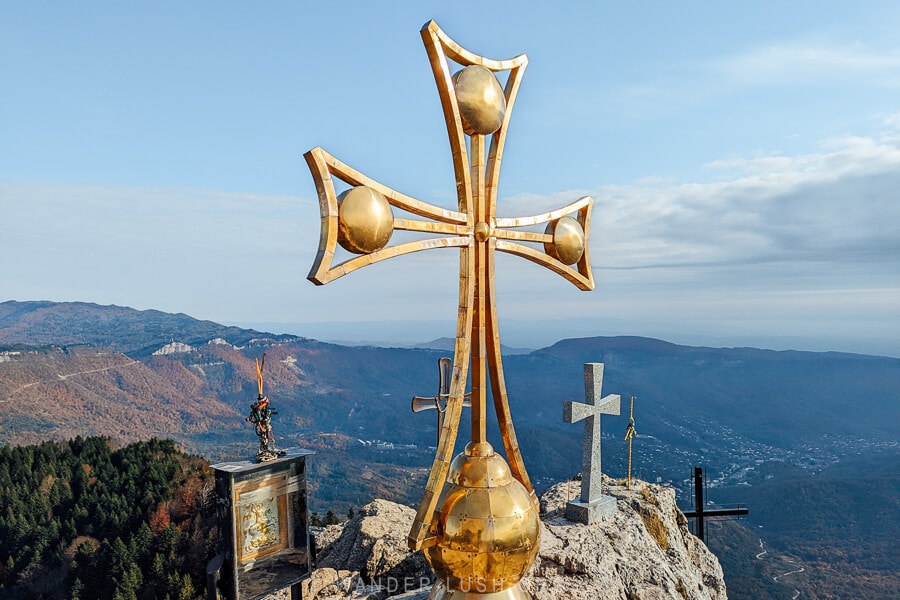
Tskhrajvari or ‘Nine Crosses’ is a mountaintop viewpoint and sacred pilgrimage place on the cusp of Imereti and Racha Regions, around 35 km north-east of Kutaisi. Similar to Khvamli, it promises panoramic views of the Greater Caucasus. In the Soviet era, there was a cable car (the second longest in Georgia) established to connect the mountaintop with the mining town of Tkibuli below.
The walking trail wraps around the stony mountainside, culminating with a small chapel and nine gold and silver crosses embedded in the rock. The hike is short, taking less than an hour one-way to complete, but the terrain is very rough and steep. Not so long ago you had to hold onto rusty metal chains to pull yourself up the cliff via ferrata style. In late 2022, several sets of wooden steps and pathways were installed to make it easier to reach the summit.
Continue a little further by road and you will come to Shaori Lake, an artificial reservoir surrounded by deciduous forest. This area has spectacular autumn colours and in winter, it transforms into a snowy wonderland.
Get there: A sealed road winds up the mountainside to the start of the hiking trail. The best departure point is Kutaisi, an hour away by road. It’s best to go with your own car, otherwise you can take a marshrutka to Tkibuli and continue by taxi from there (around 15 km).
Further reading: My detailed guide to the Tskhrajvari hike.
49. Saro: Megaliths & subterranean houses in Meskheti
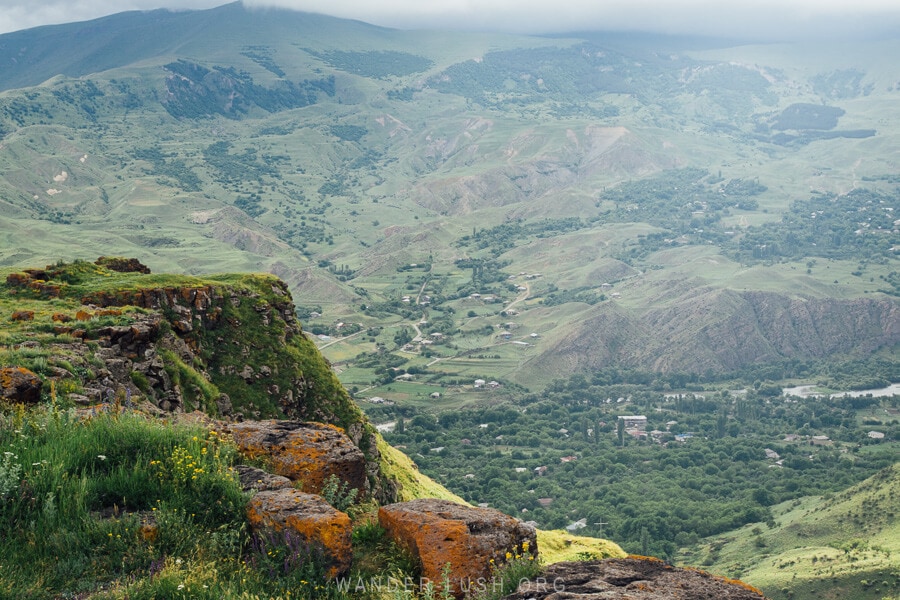
Part of Southern Georgia’s Meskheti Region, Saro village is perched on a ridge roughly halfway between Akhaltsikhe and Vardzia. A cyclopean fortress – one of the estimated 1,000 megalithic structures scattered around the region – was built here in the Bronze Age.
Adjacent to the lichen-covered megaliths, the 7th-century Archangel Church of Saro contains a set of standard bearer flags used in the past for battle processions and Easter celebrations alike. Sister Teona is one of the warmest nuns I have met in Georgia – be sure to visit the convent gift shop and purchase a souvenir as a thank-you for the short tour.
The church is the starting point for the Saro to Nijgori hike, a new 2.2km marked trail that ends in the lower village of Nijgori near the main highway. In Saro village, you can find examples of Darbazuli Sakhi ‘Hall Houses’, traditional Meskhetian dwellings with intricate pyramid ceilings made using special wood joinery. Locals call these ‘swallow’s ceilings’ because birds make their nests in the corners. The subterranean houses are privately owned and well-hidden, but if you ask around, you might find someone who is willing to let you inside for a look.
Get there: Saro is accessible by road in under an hour from Akhaltsikhe. A new sealed road leads to the village from the main highway. Or you can hike up to Saro from Nijgori by following the marked trail that starts near the mosque.
Where to stay: Guest House Tirebi is a family-run agritourism guesthouse 20 minutes’ drive from Saro, close to the Vardzia cave complex.
50. Machakhela National Park: Wilderness near Batumi
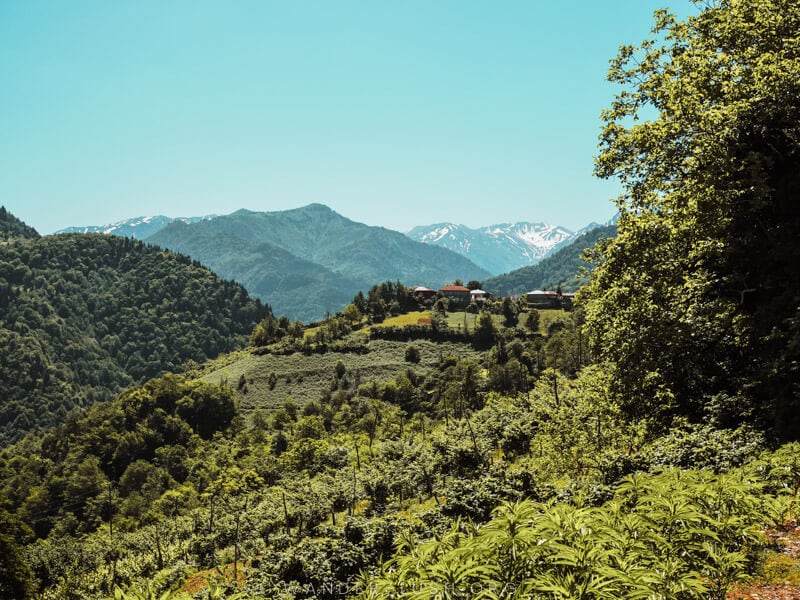
Located in the gorge that separates Georgia from Turkiye, Machakhela is a verdant landscape of ancient Colchic forest and humid river valleys. Despite being an hour’s drive from Batumi, this is a truly pristine corner of the country that is only just starting to open up to tourism. It came under the wing of the national parks service quite recently, and so far three marked hiking trails plus a visitor’s centre have been established. But this is no Mtirala: infrastructure is still a work in progress
The landscapes are stunning, but what is even more appealing to me is the cultural heritage. In the past, Machakhela was known for its flint gunsmiths and a handful of families who live within the park continue this tradition (although the guns they forge are for decorative purposes only!). A small Ethnographic Museum documents the area’s craftsmanship and role in the Russo-Turkish Wars. Stone Tamar bridges arch over the fast-flowing Machakhlistskali River, which powers old-fashioned grain mills.
Get there: New Isuzu city buses bound for Khulo depart from Batumi in the morning and evening and can drop you off early at Acharistskali, 11 km from the park administration. Alternatively, take a Bolt taxi all the way to Zeda Chkhutuneti village for 60 GEL one-way, or book a private return transfer with GoTrip.
Where to stay: Woodhide self-contained cottages are nestled deep within the park and feature mountain views.
Further reading: How to tour Machakhela by scooter.
What destinations do you recommend in Georgia? I plan to add more to this guide over the coming weeks and months – I already have my own wish list, but I’d love to hear your suggestions too! Let me know in the comments below.
Georgia essentials
Here are the websites and services I personally use and recommend for Georgia. Check out my full list of travel resources for more tips.
FLIGHTS: Search for affordable flights to Tbilisi, Batumi or Kutaisi on Skyscanner.
TRAVEL INSURANCE: Insure your trip with HeyMondo, my preferred provider for single-trip and annual travel insurance (get 5% off when you book with my link).
SIM CARD: Magti is my preferred provider, with prices starting from 9 GEL/week for unlimited data. See this guide for all the details about buying a Georgian SIM card.
AIRPORT TRANSFERS: Most flights into Georgia arrive in the early hours. For ease, pre-book a private transfer from Tbilisi Airport to your hotel (from $19) or from Kutaisi Airport to Tbilisi (from $90) with my partners at GoTrip.ge.
ACCOMMODATION: Booking.com is the most widely used platform in Georgia. Use it to find family guesthouses, private apartments, hostels and hotels around the country.
CAR HIRE: Find a great deal on a rental car in Georgia – use the Local Rent website to book through a local agent (prices start from $20/day).
DAY TRIPS & CITY TOURS: Use Viator or Get Your Guide to browse a range of day trips and city tours. For off-beat programs, I recommend Friendly.ge (use the promocode wanderlush for 10% off). For in-depth day trips to Georgia’s wine regions, I recommend Eat This! Tours (use the promo code wanderlush for 5% off).
PRIVATE TRANSFERS: GoTrip.ge is a terrific service for booking a private professional driver and car for the day. Use it for A-to-B transfers, a customised round-trip itinerary, or a multi-day trip. You can stop wherever you like for as long as you like without the fixed price going up.
NEED SOME HELP?: Need feedback on your itinerary or personalised travel tips? I offer a one-on-one consultation call service for Tbilisi and Georgia. More information and bookings here.



